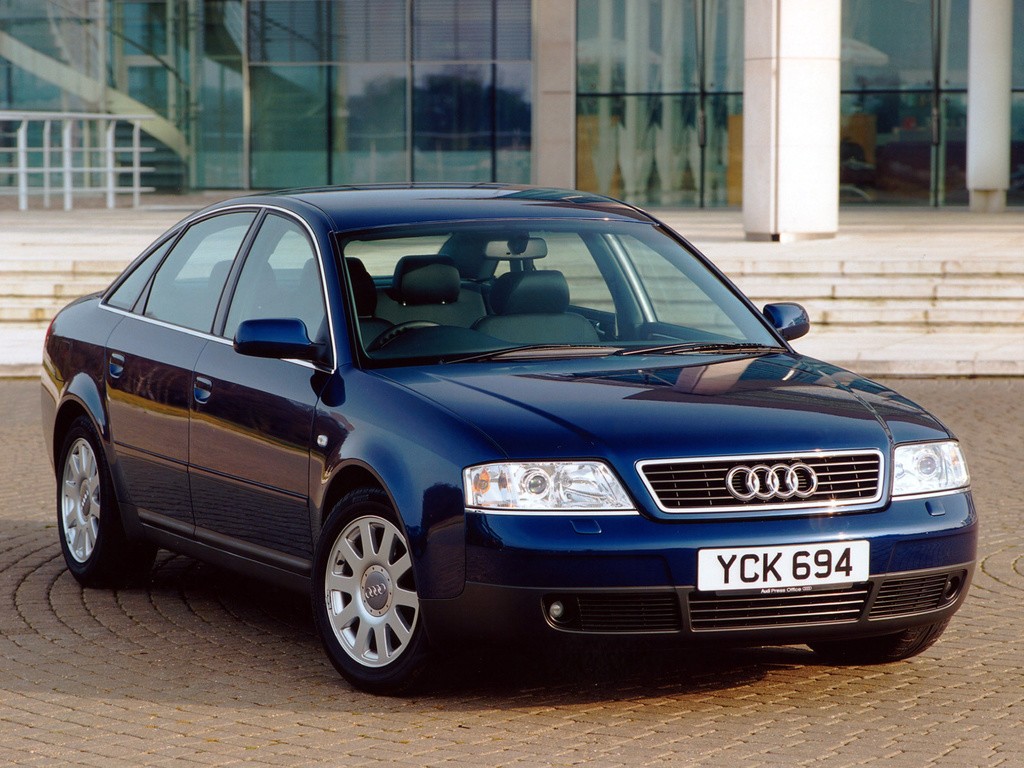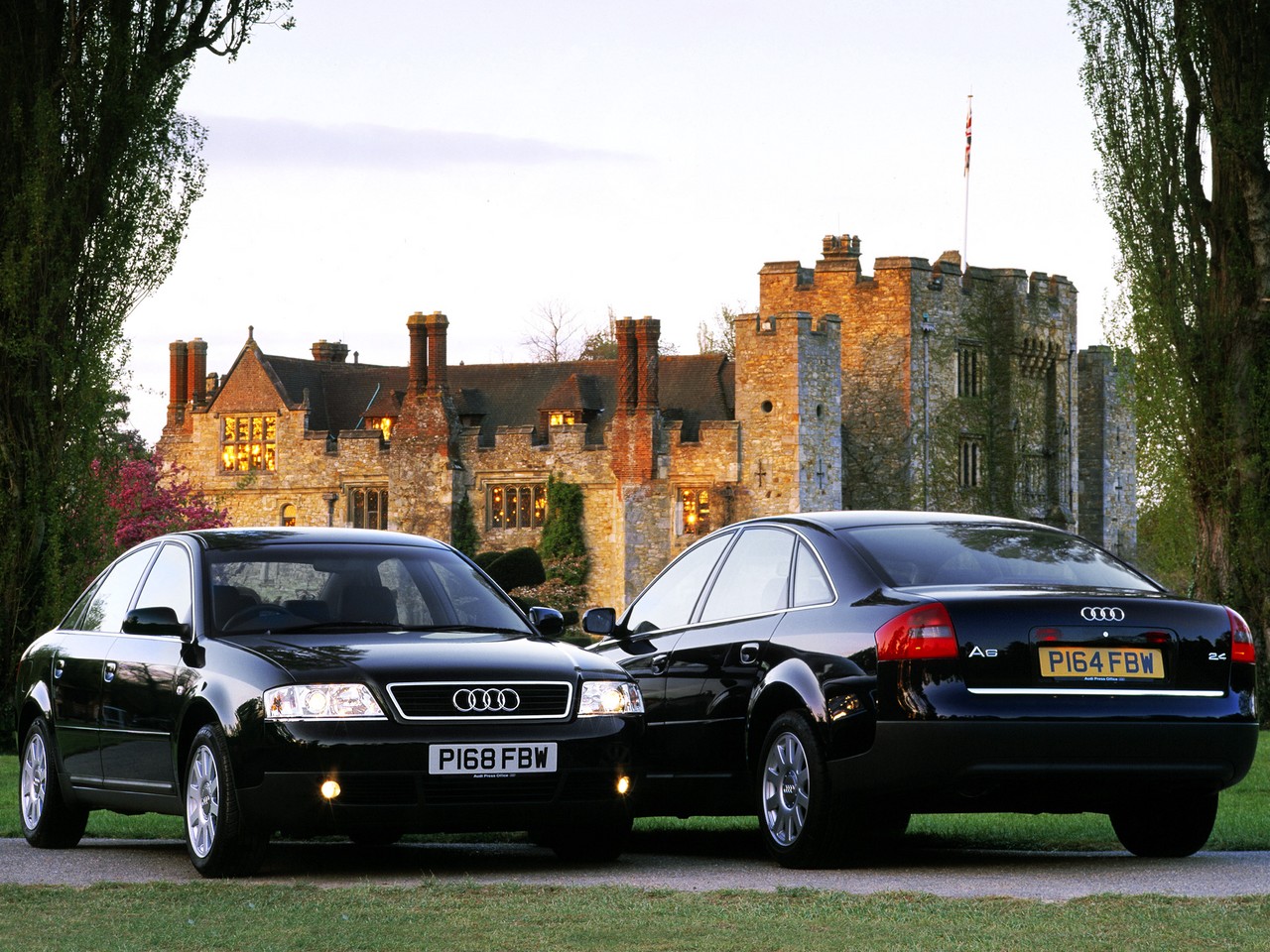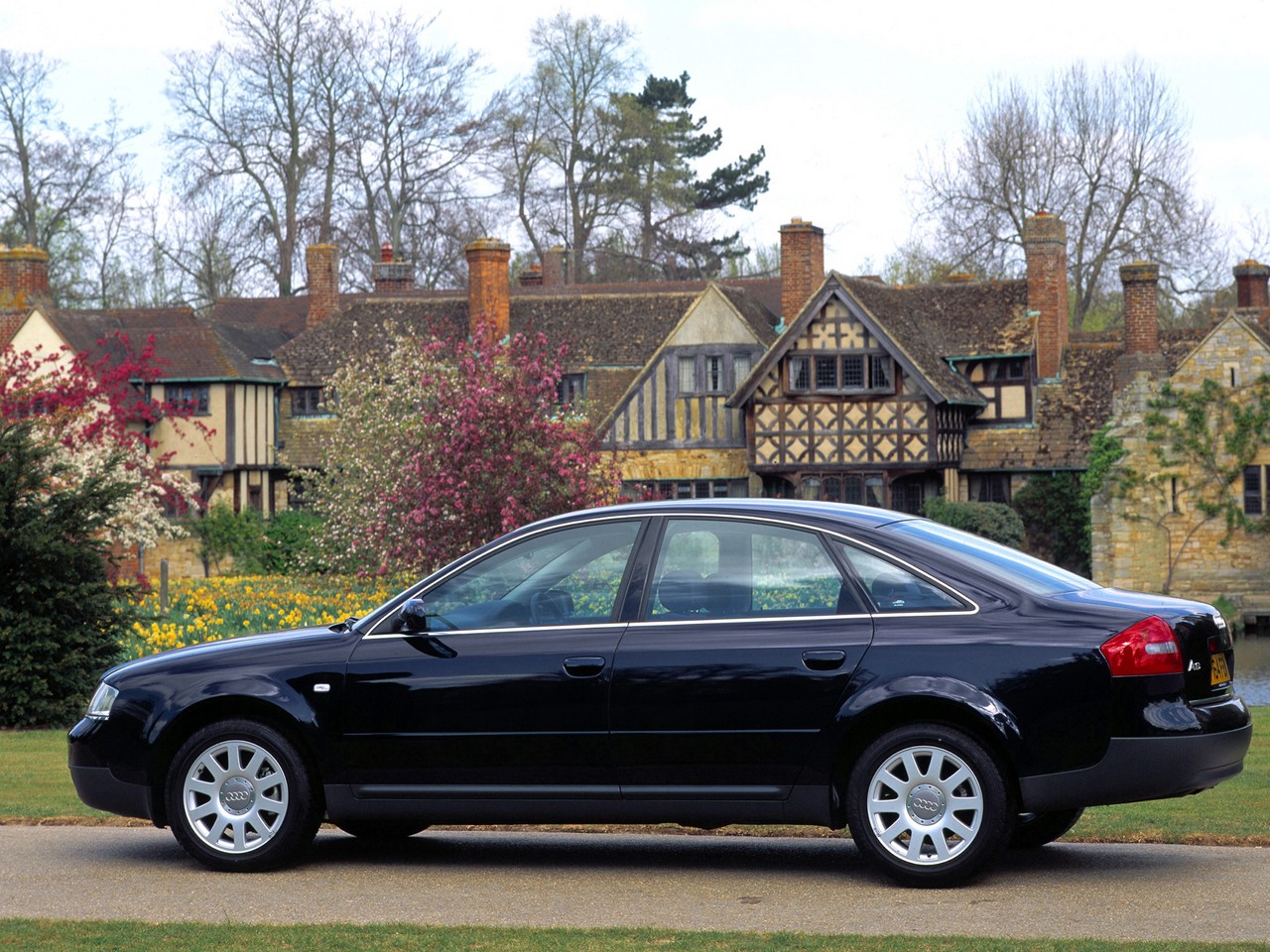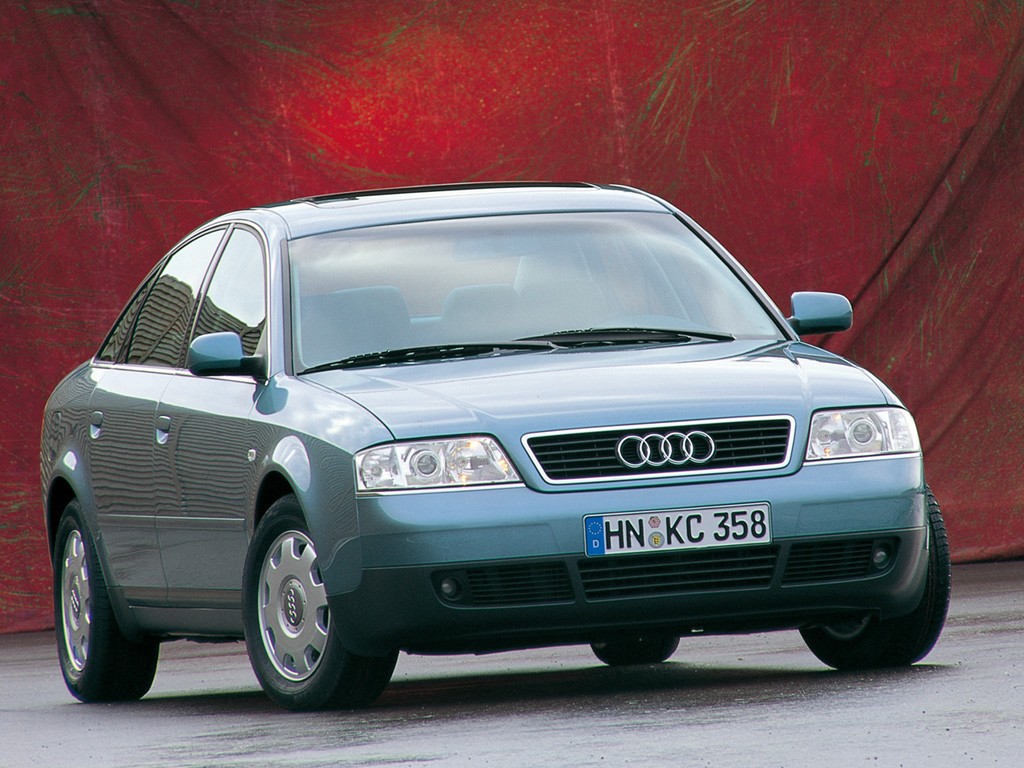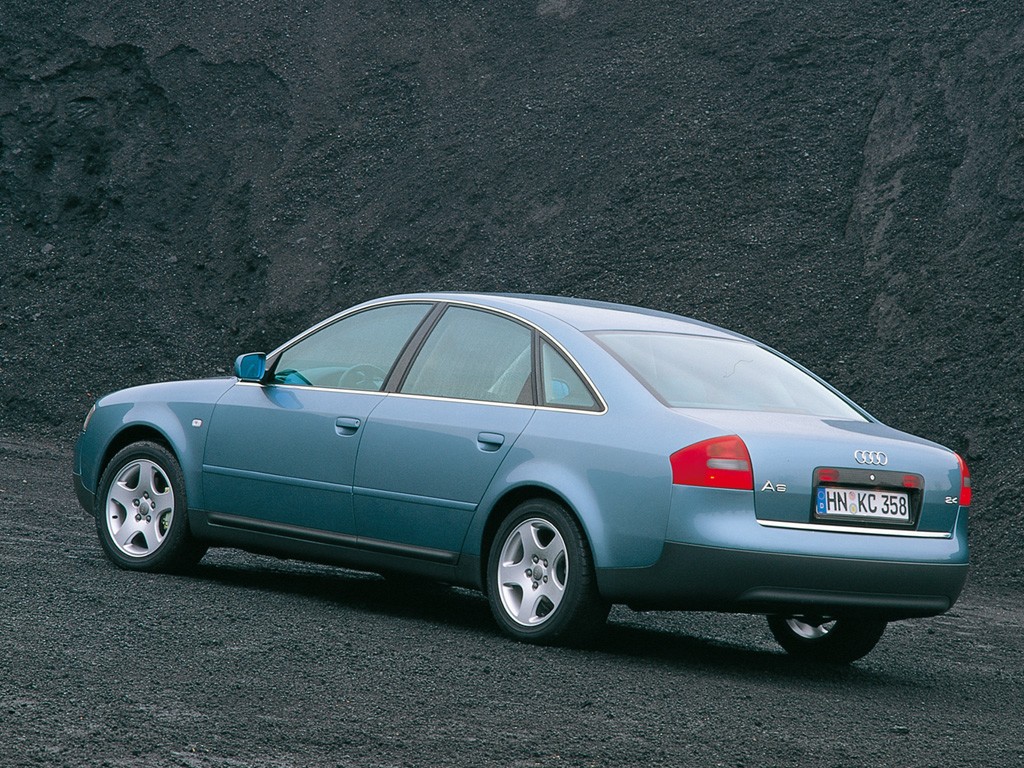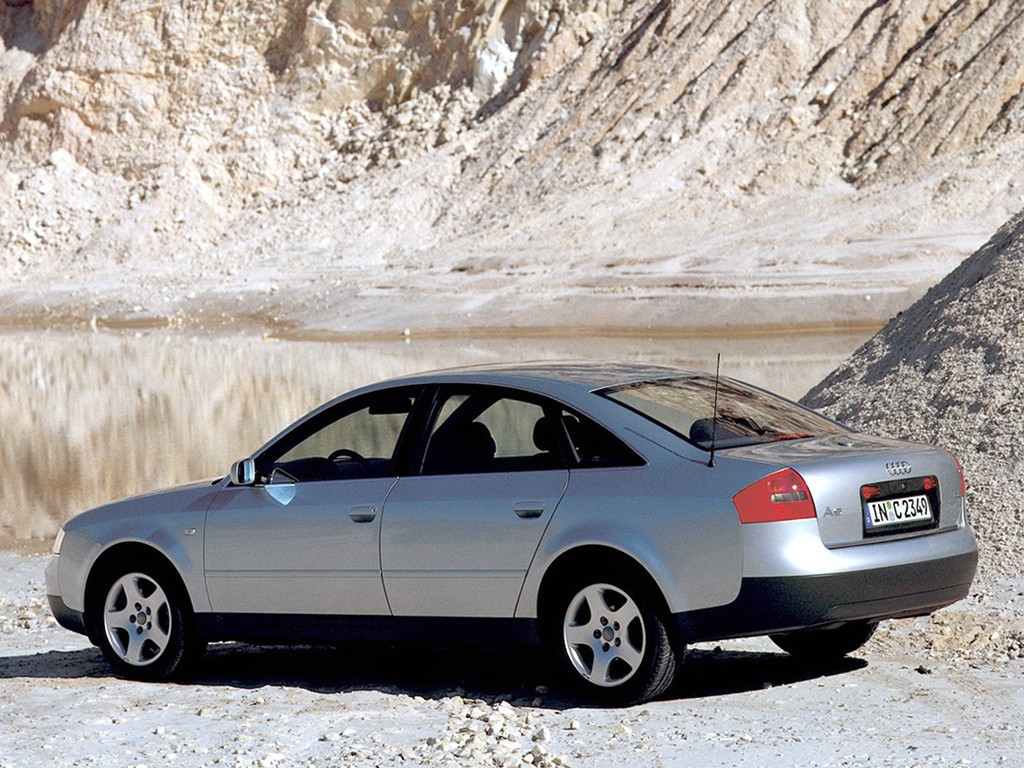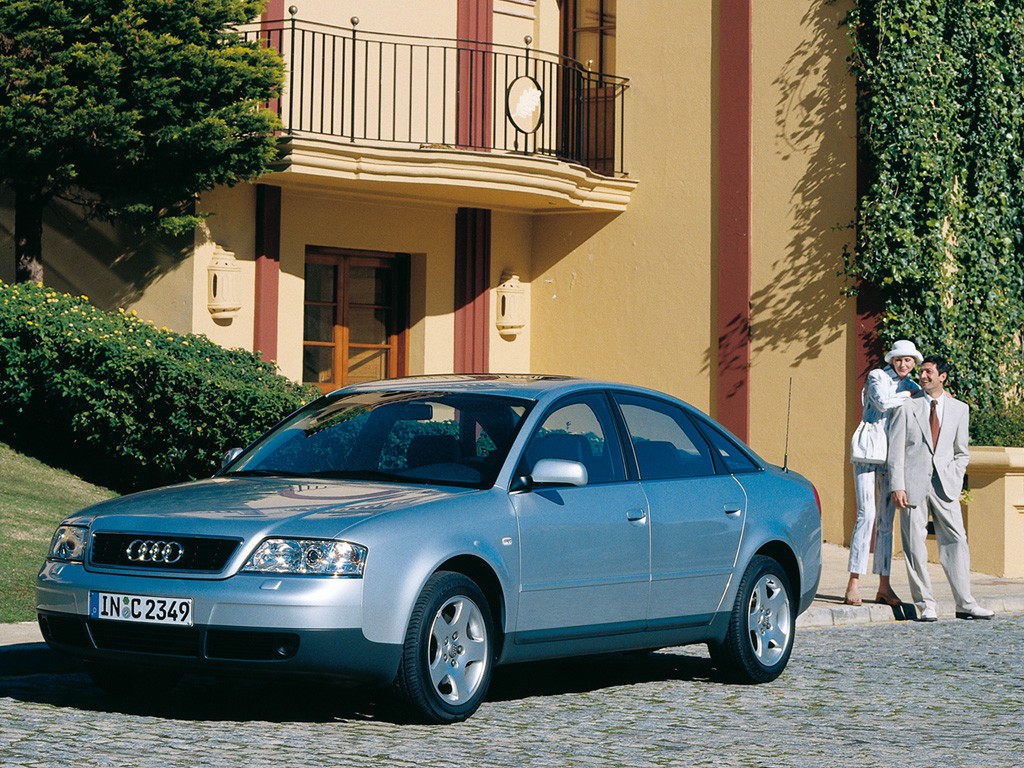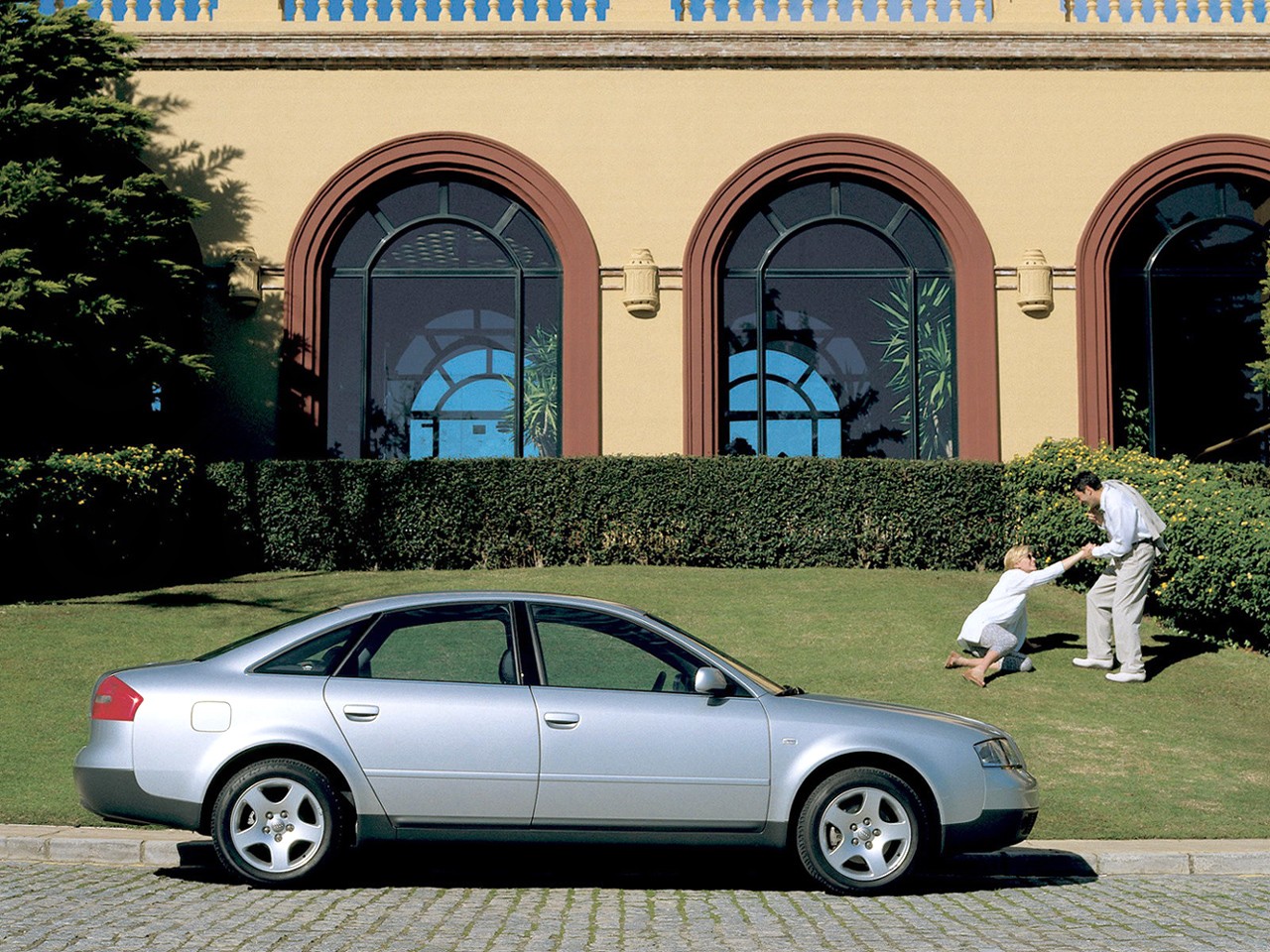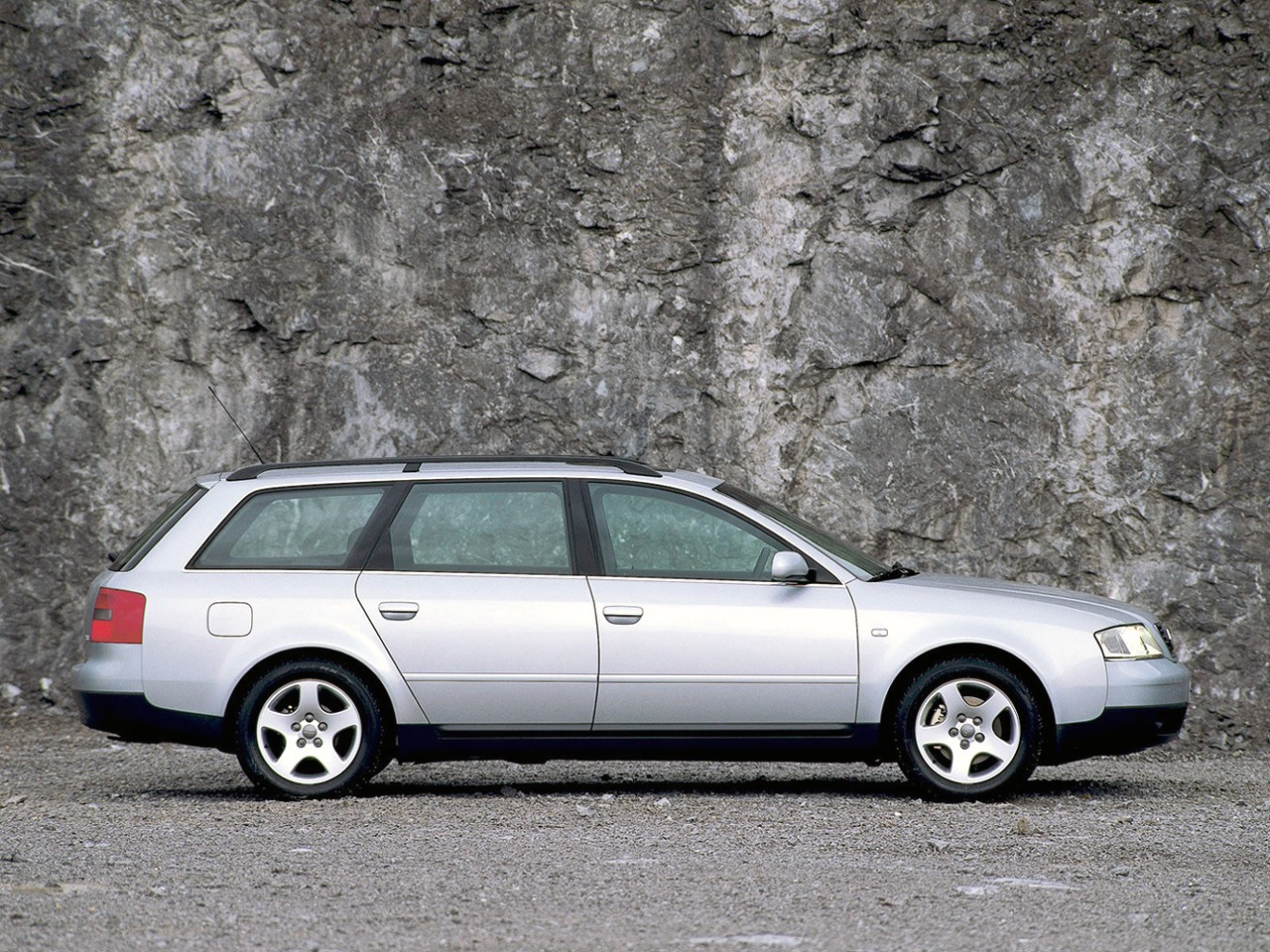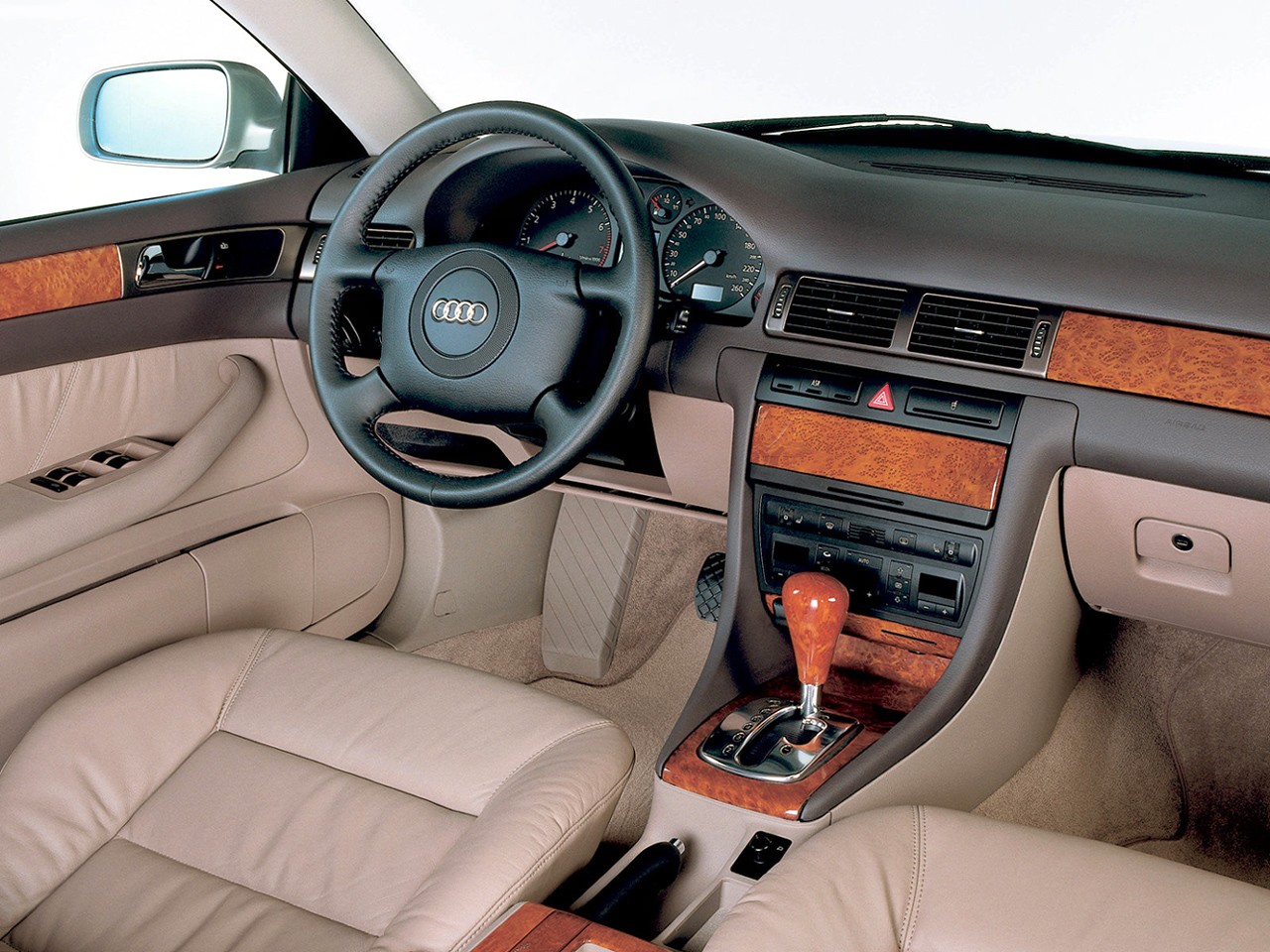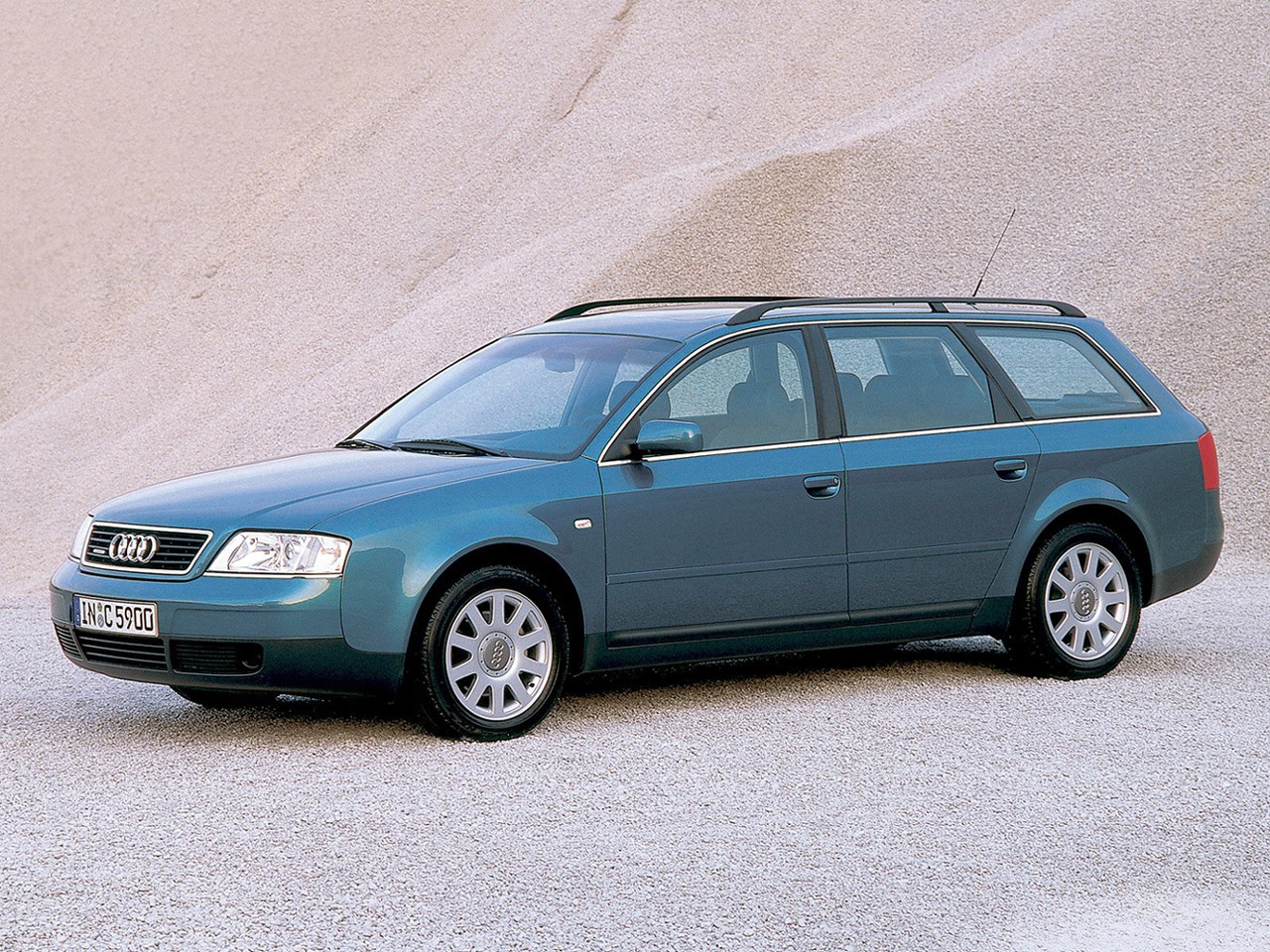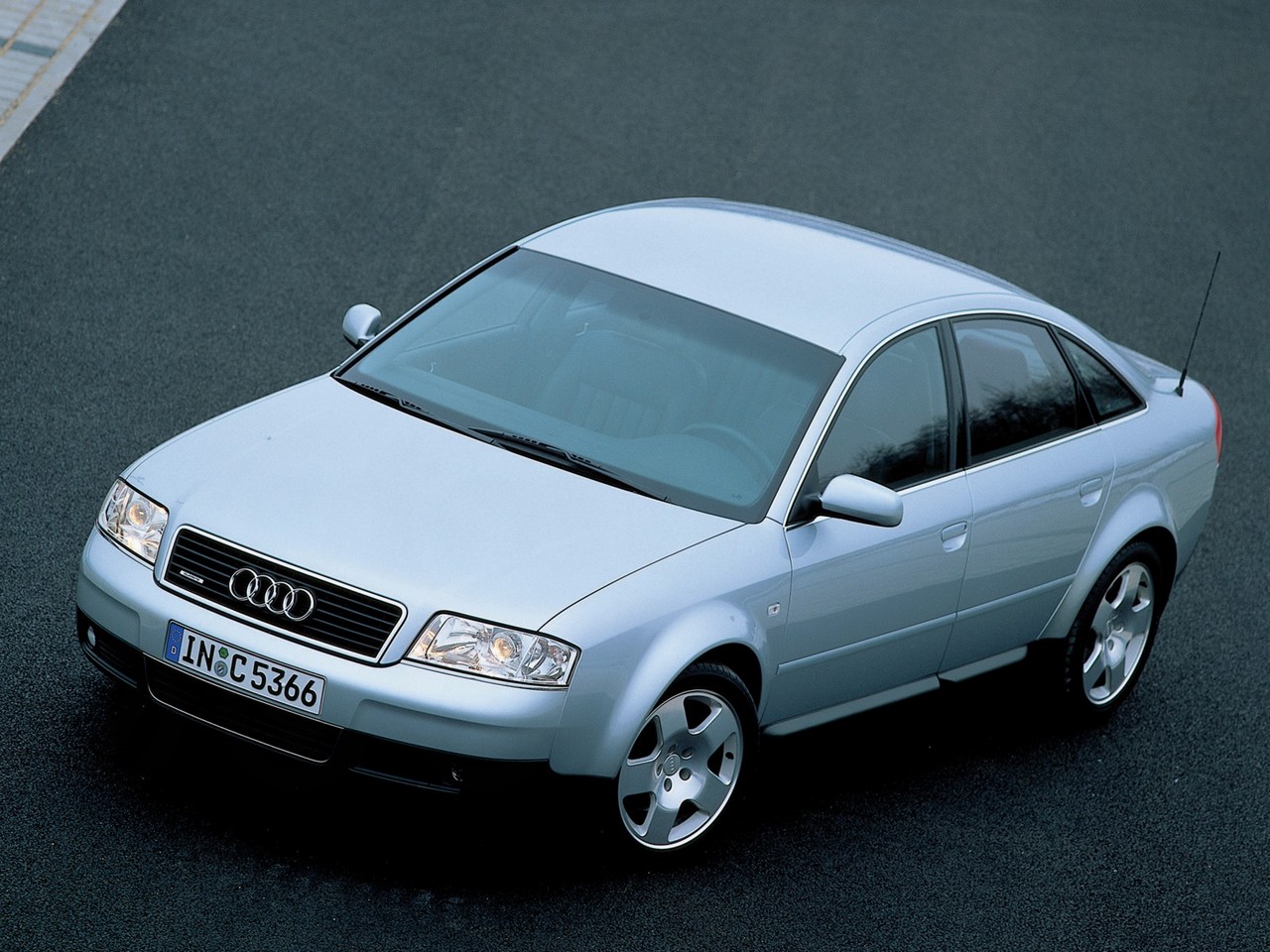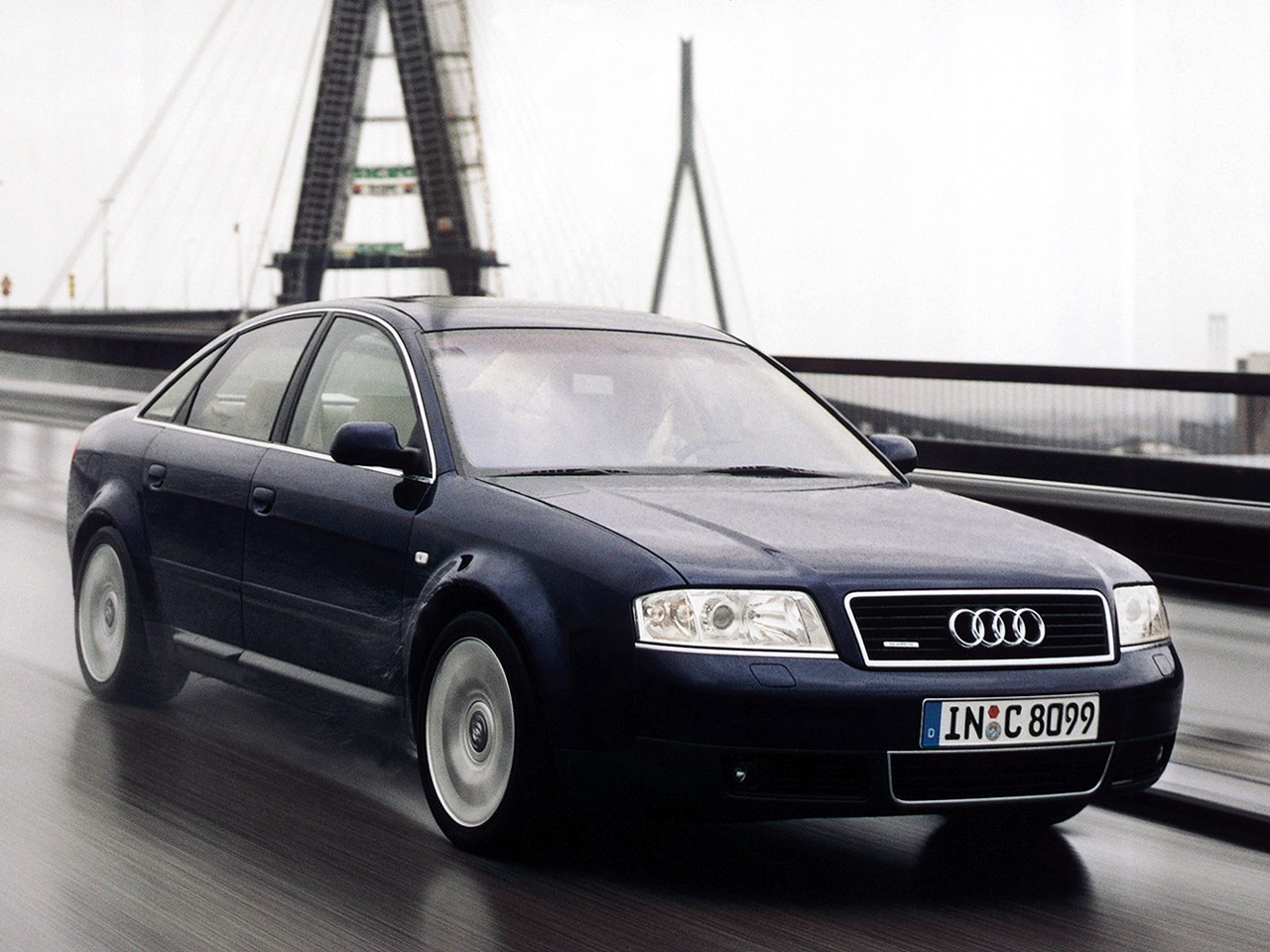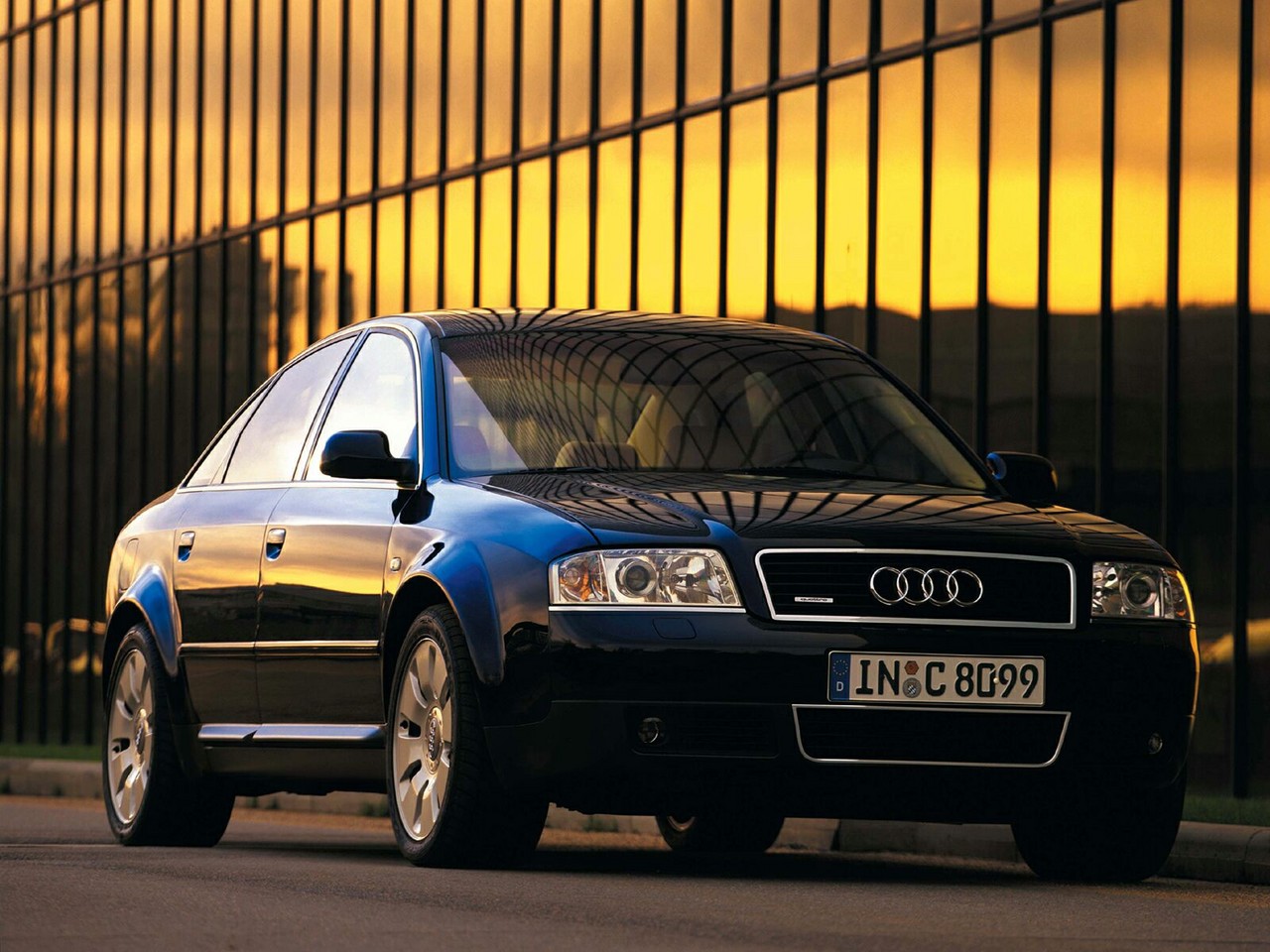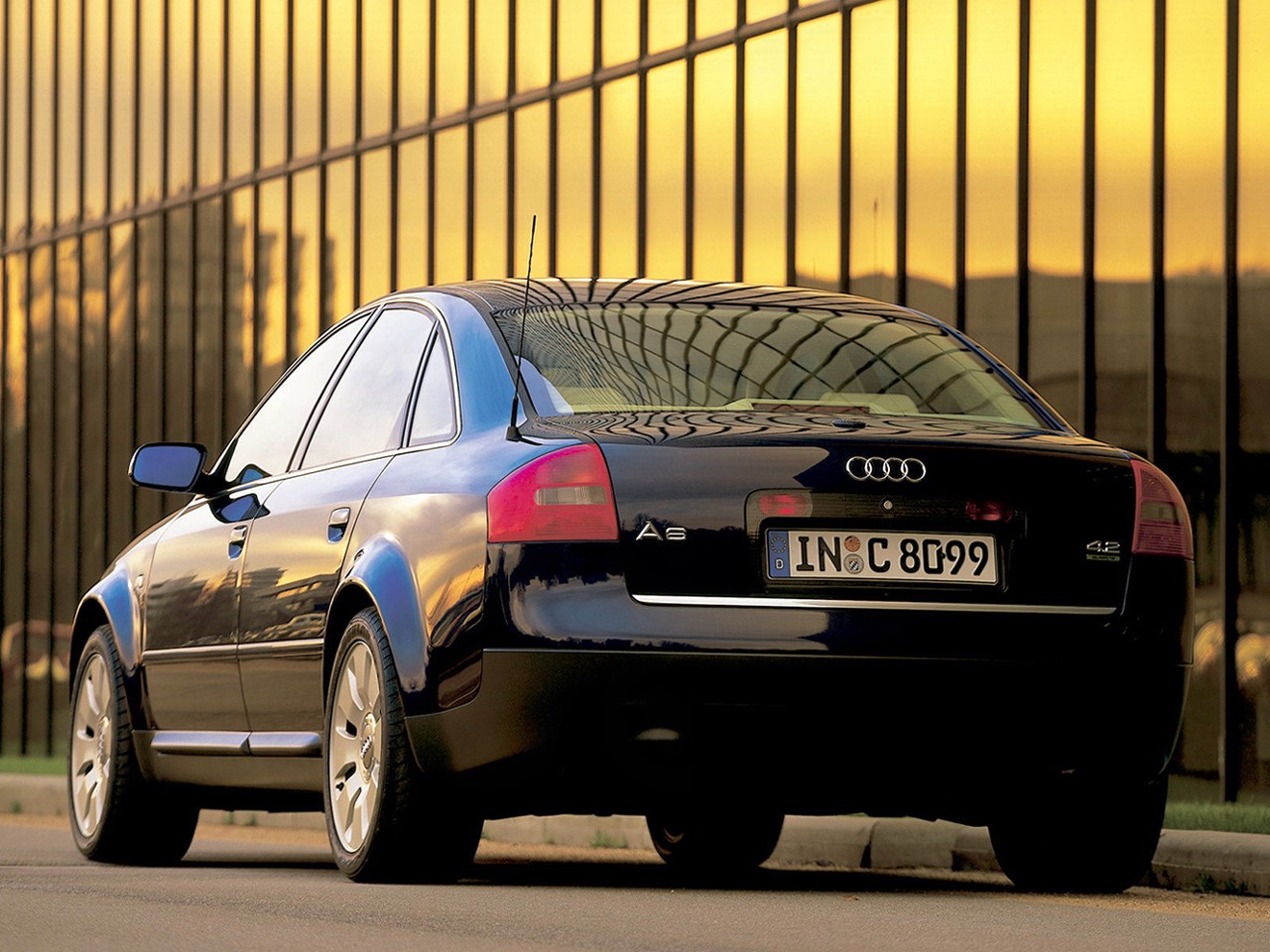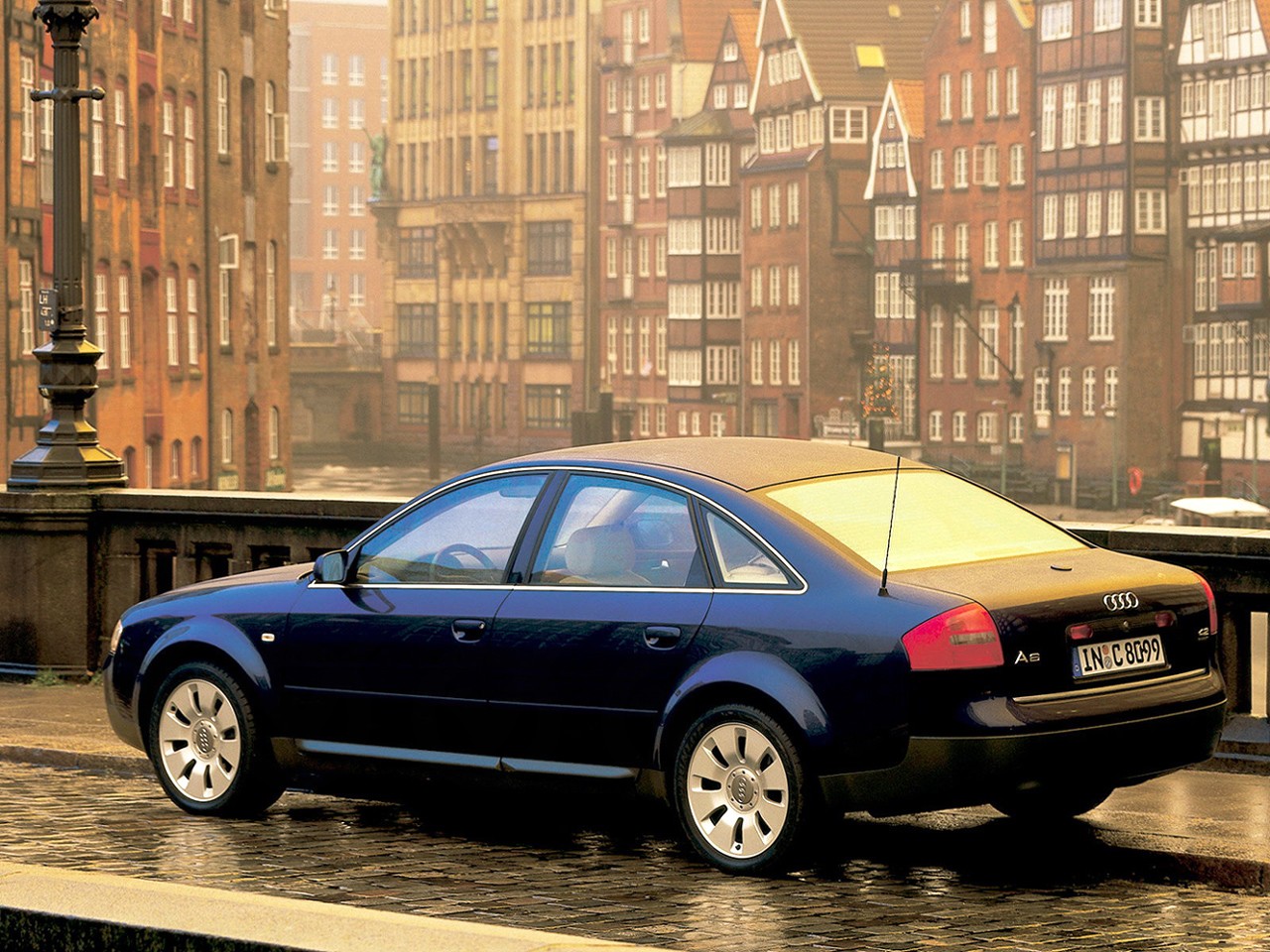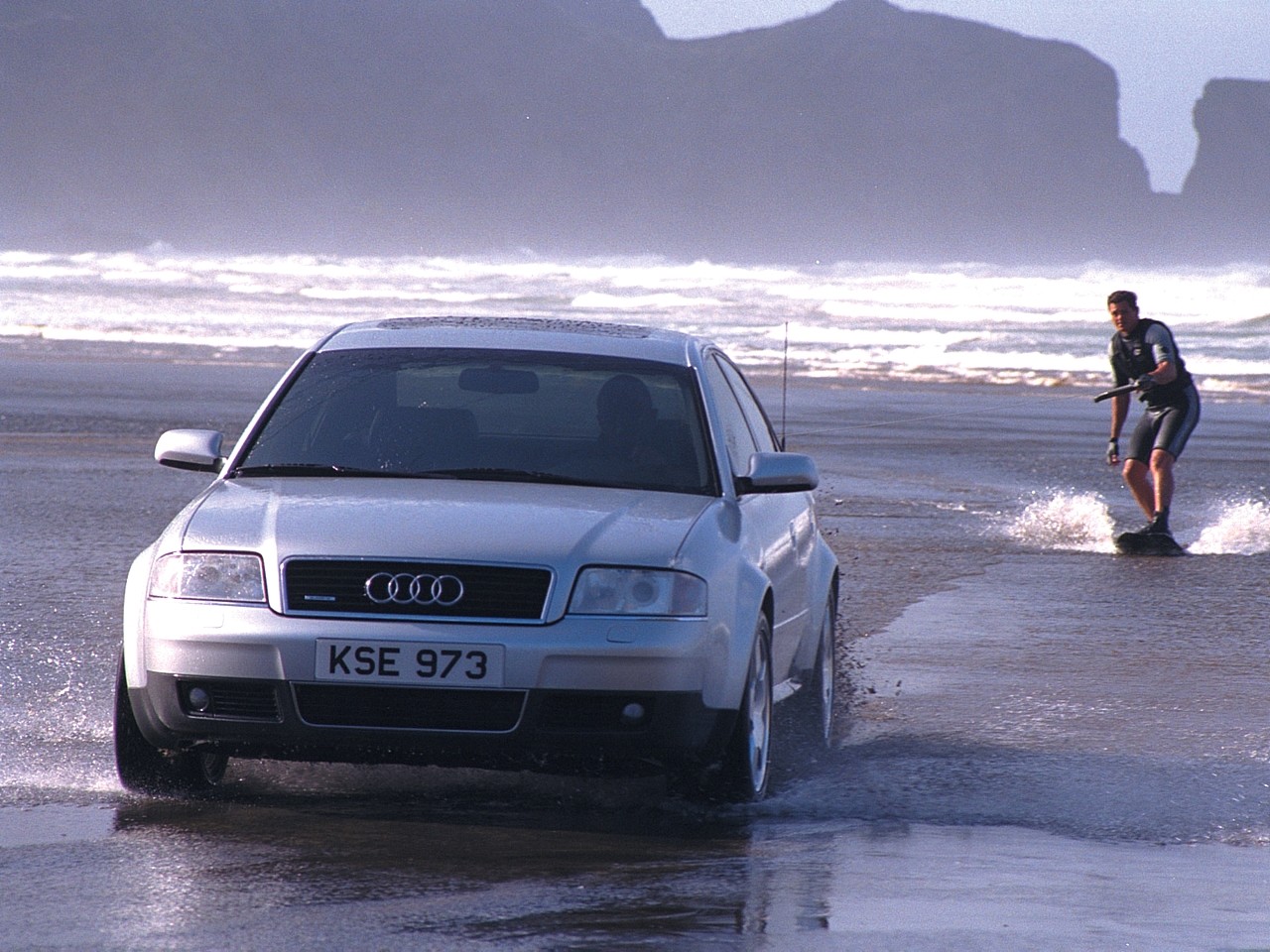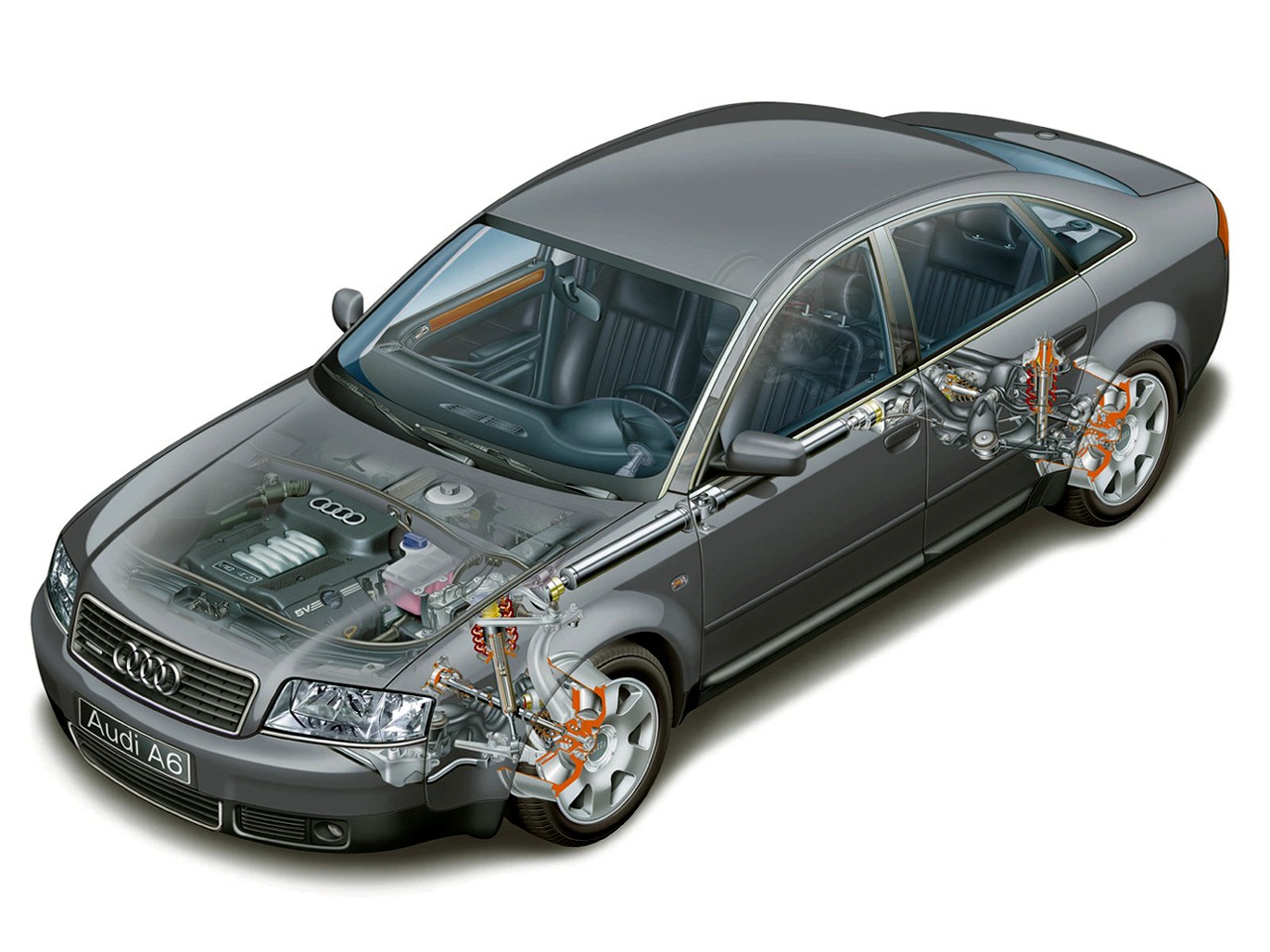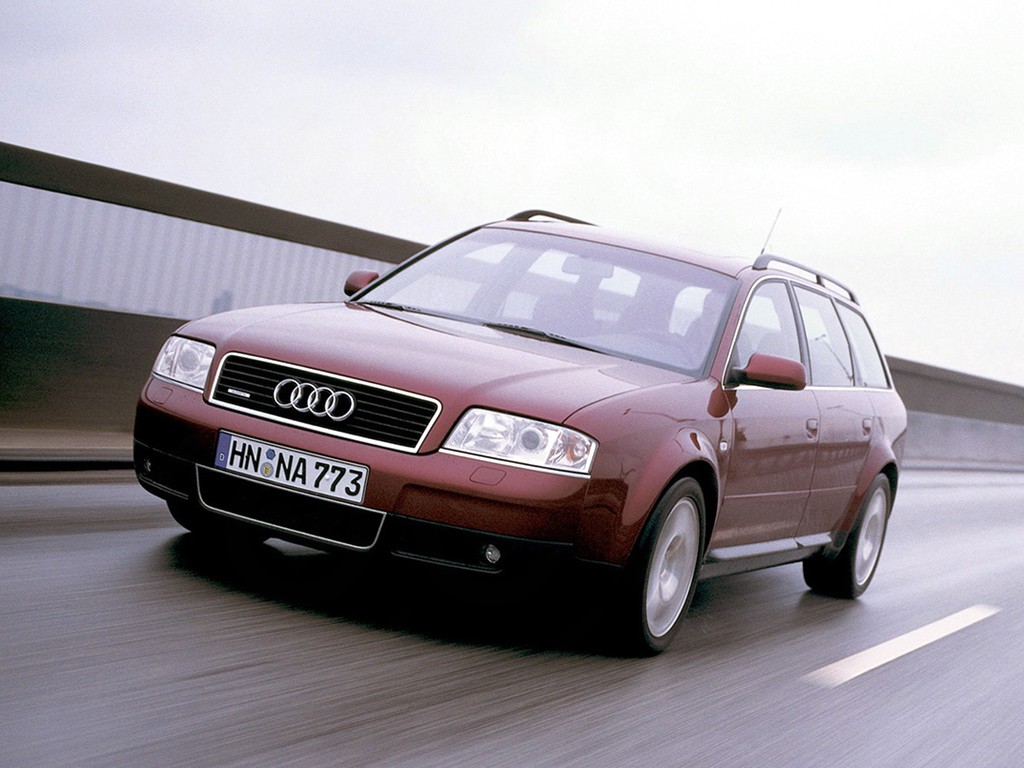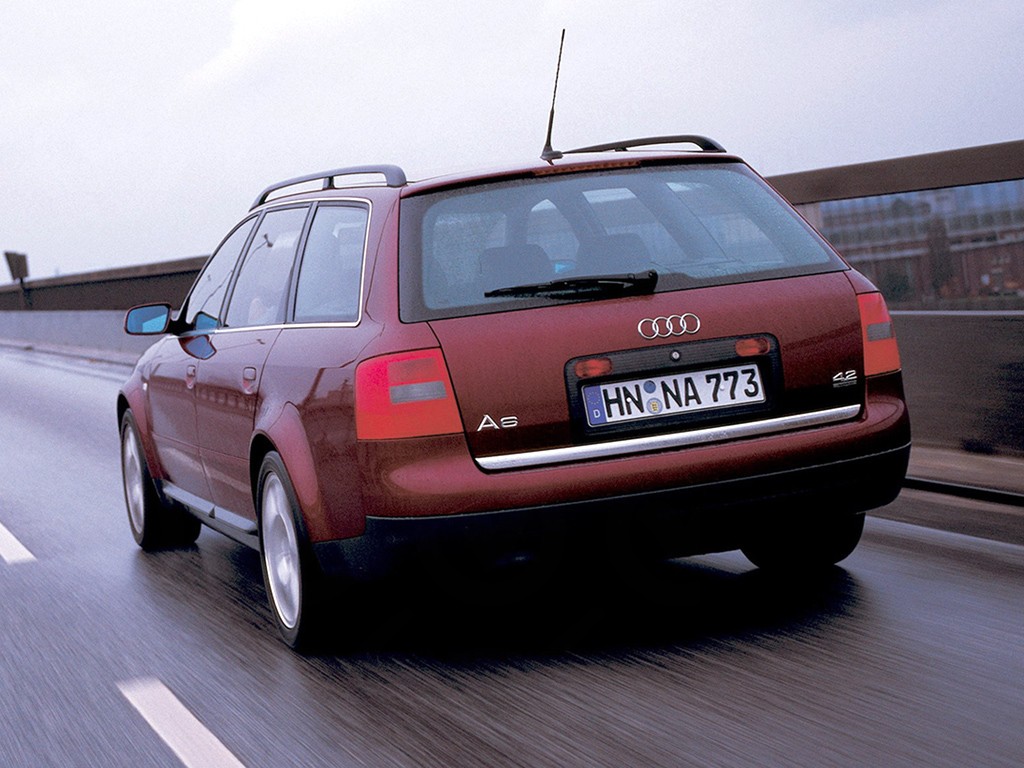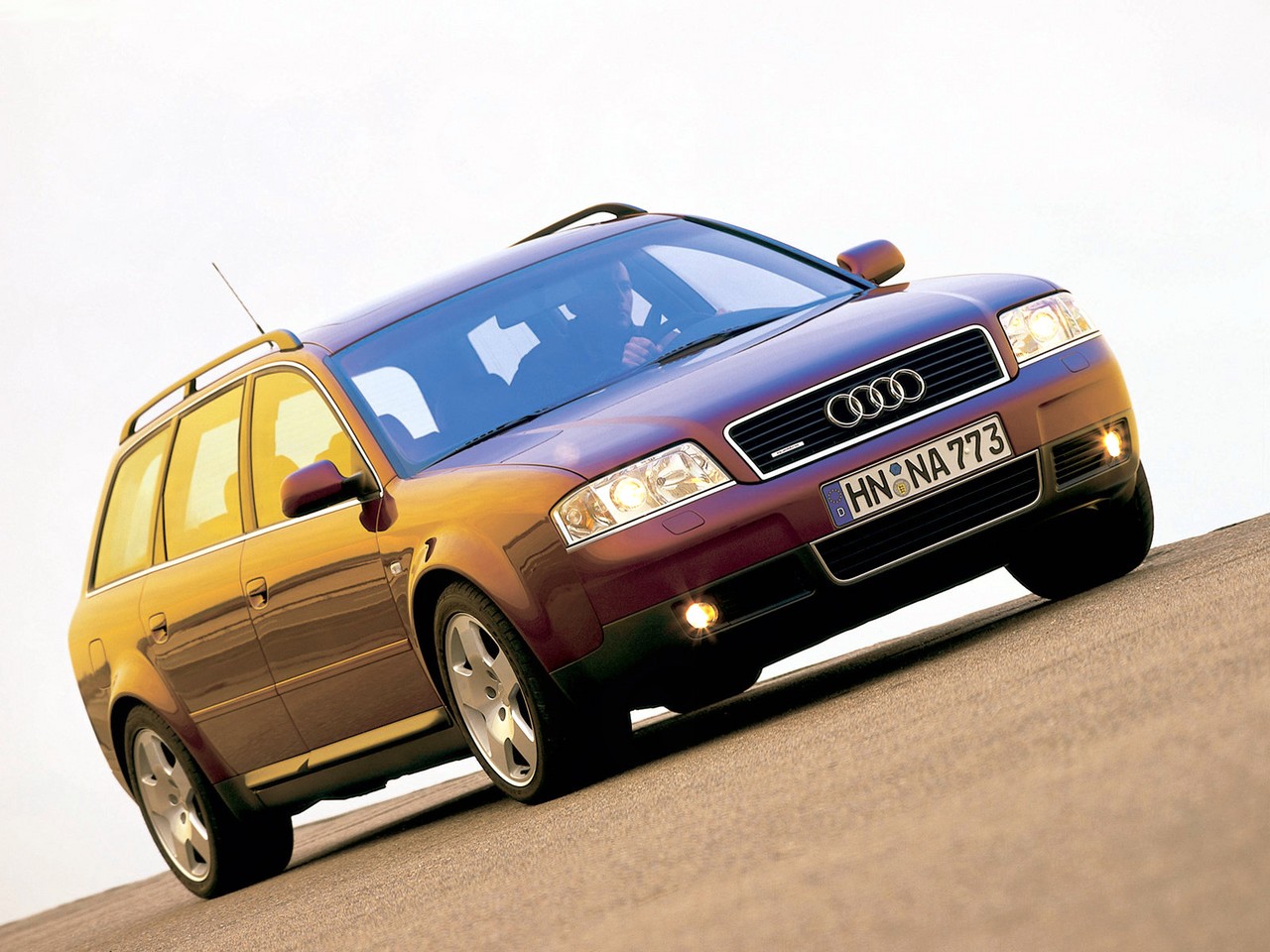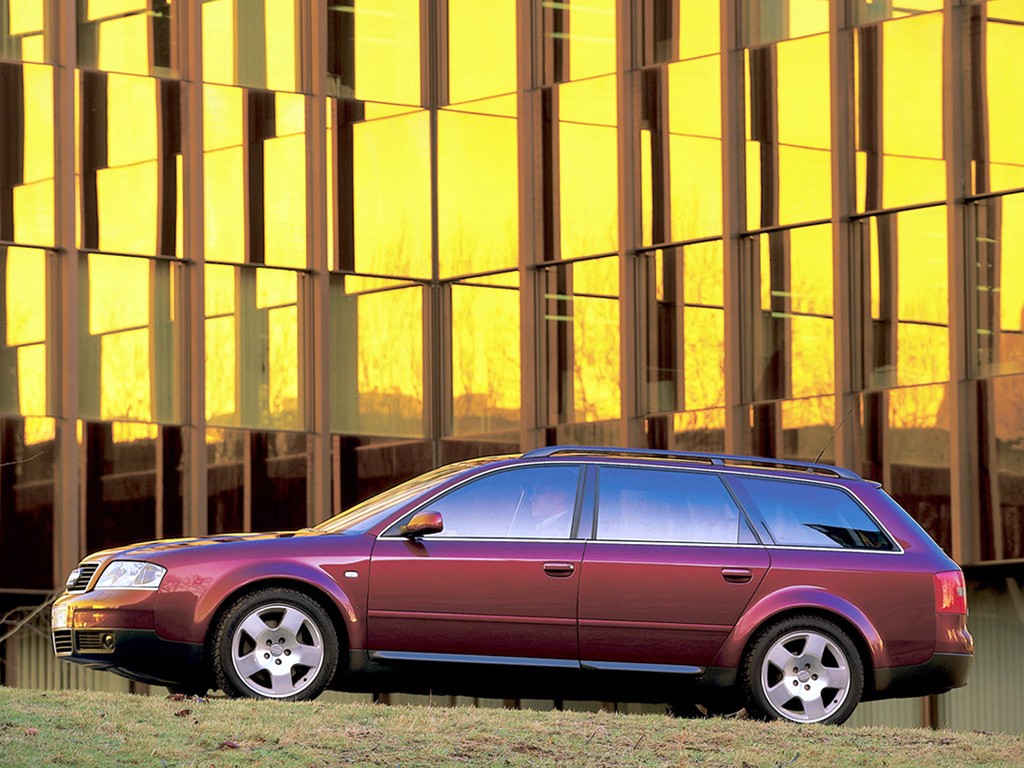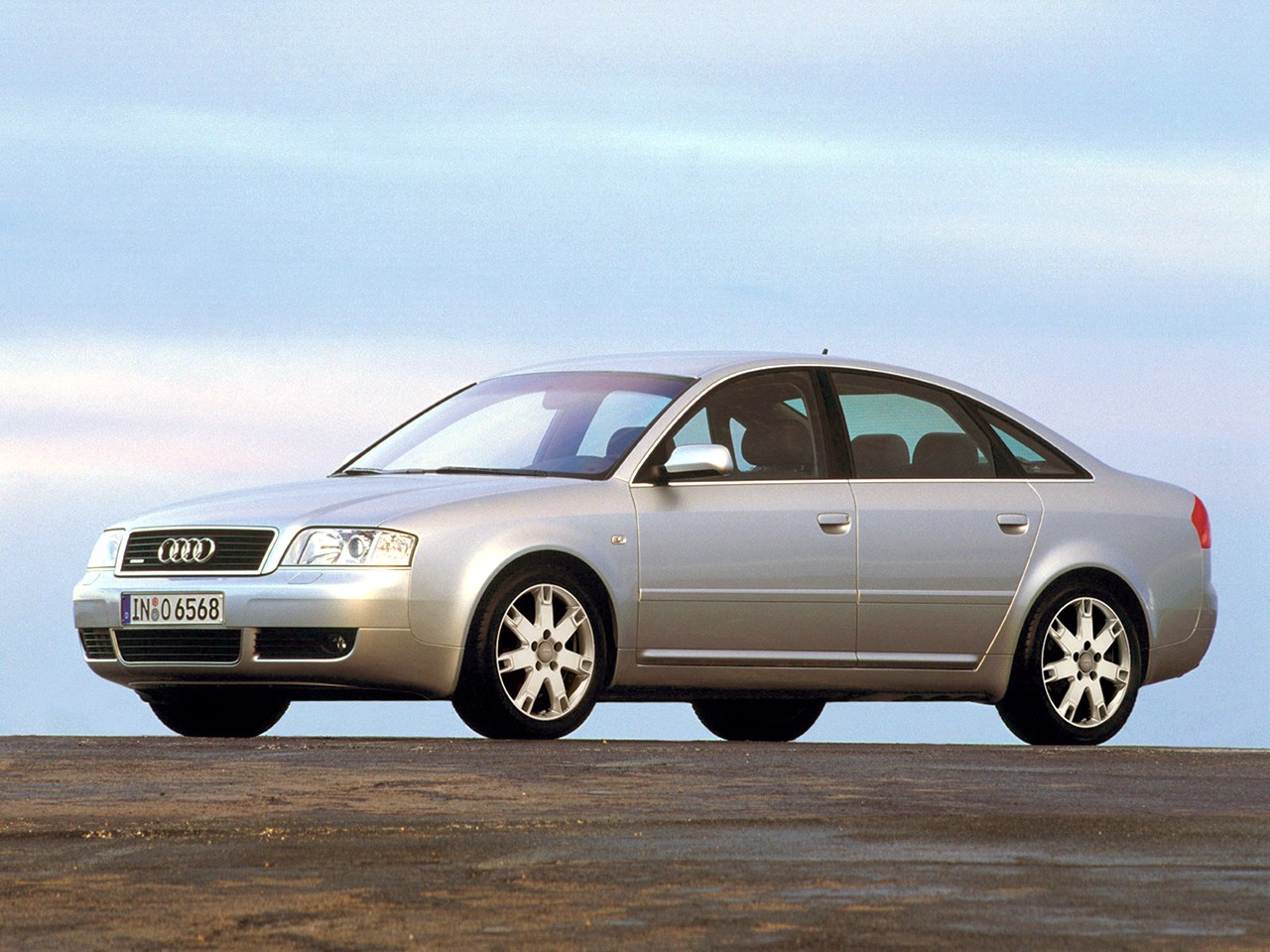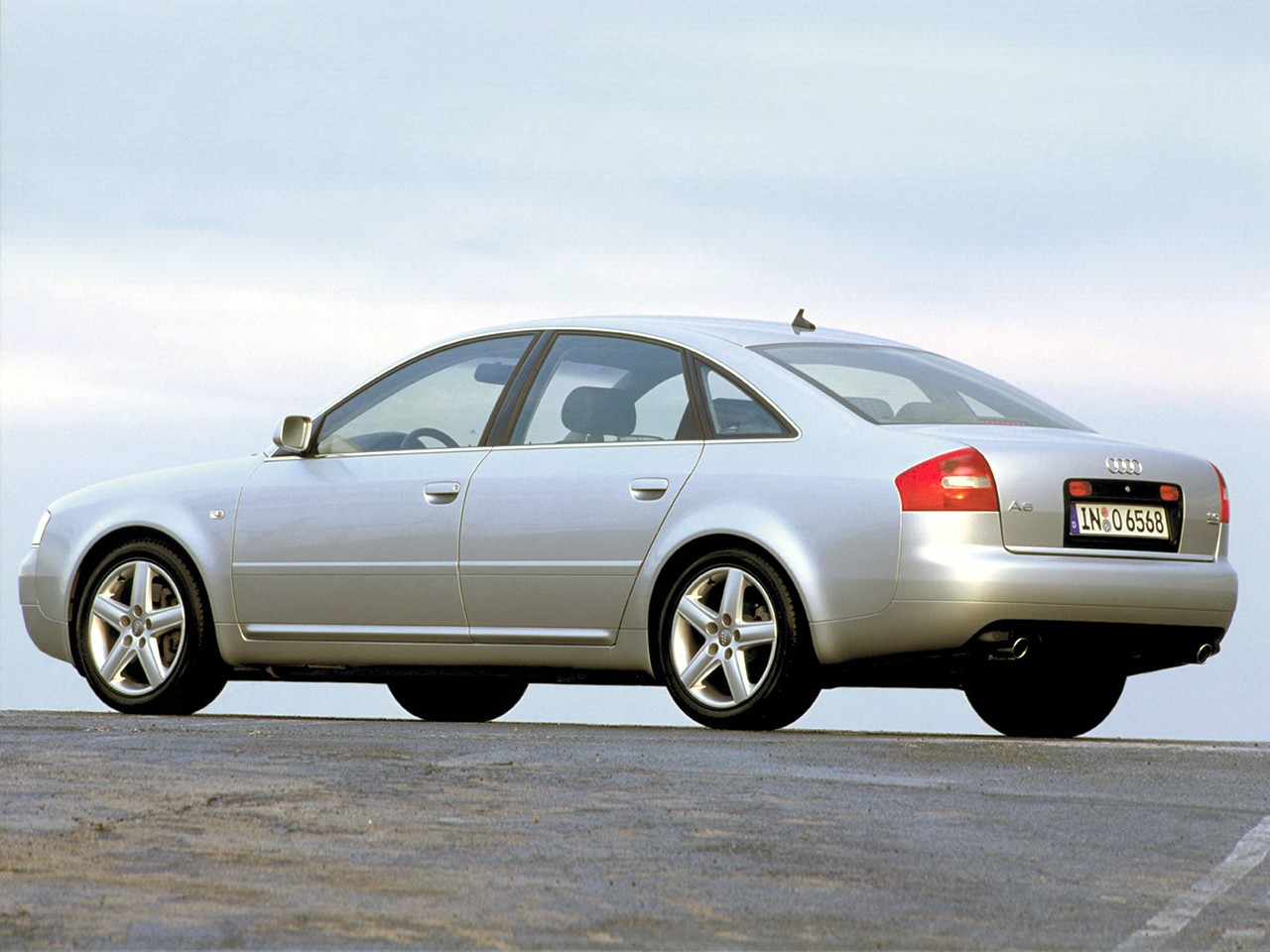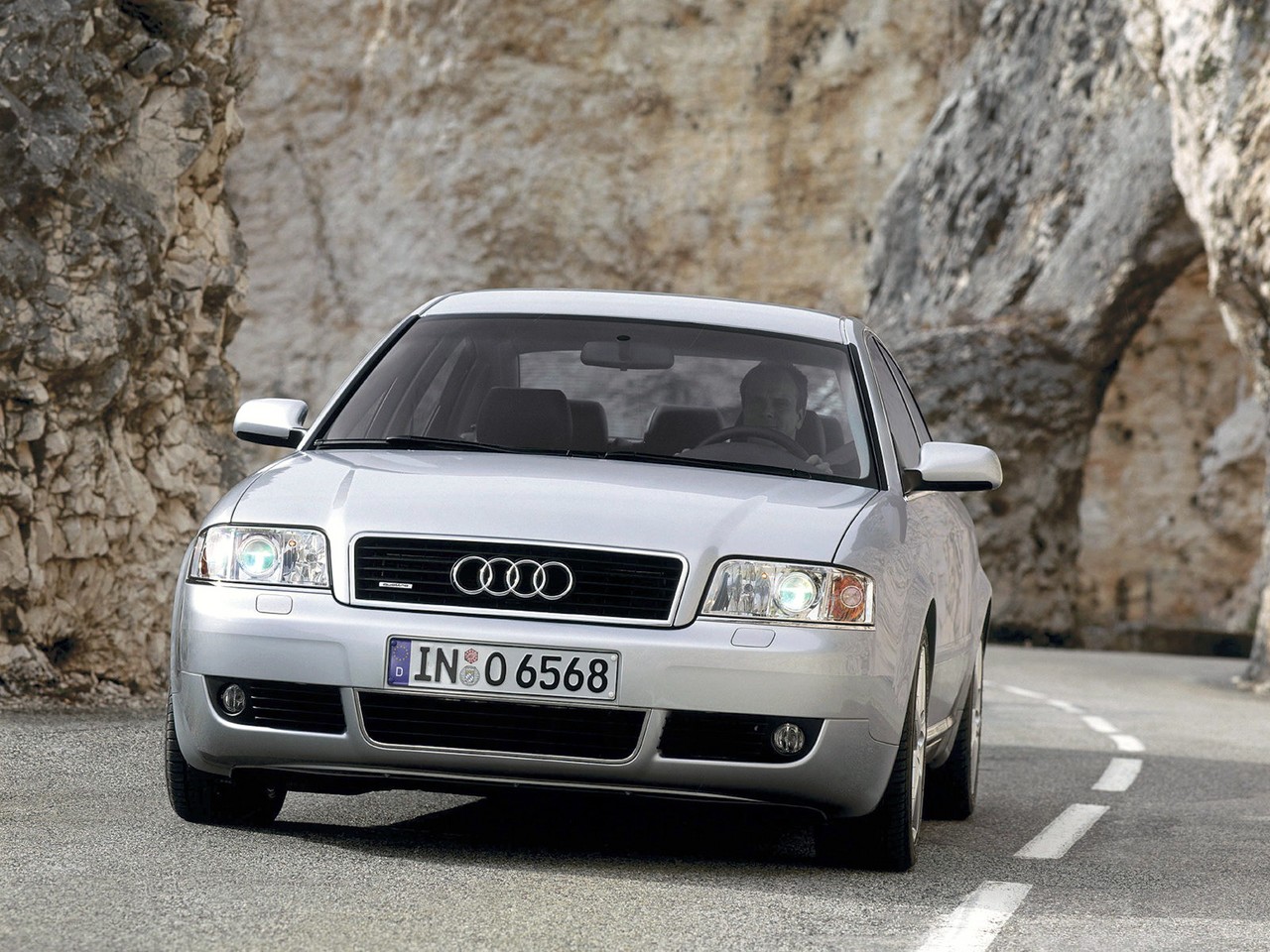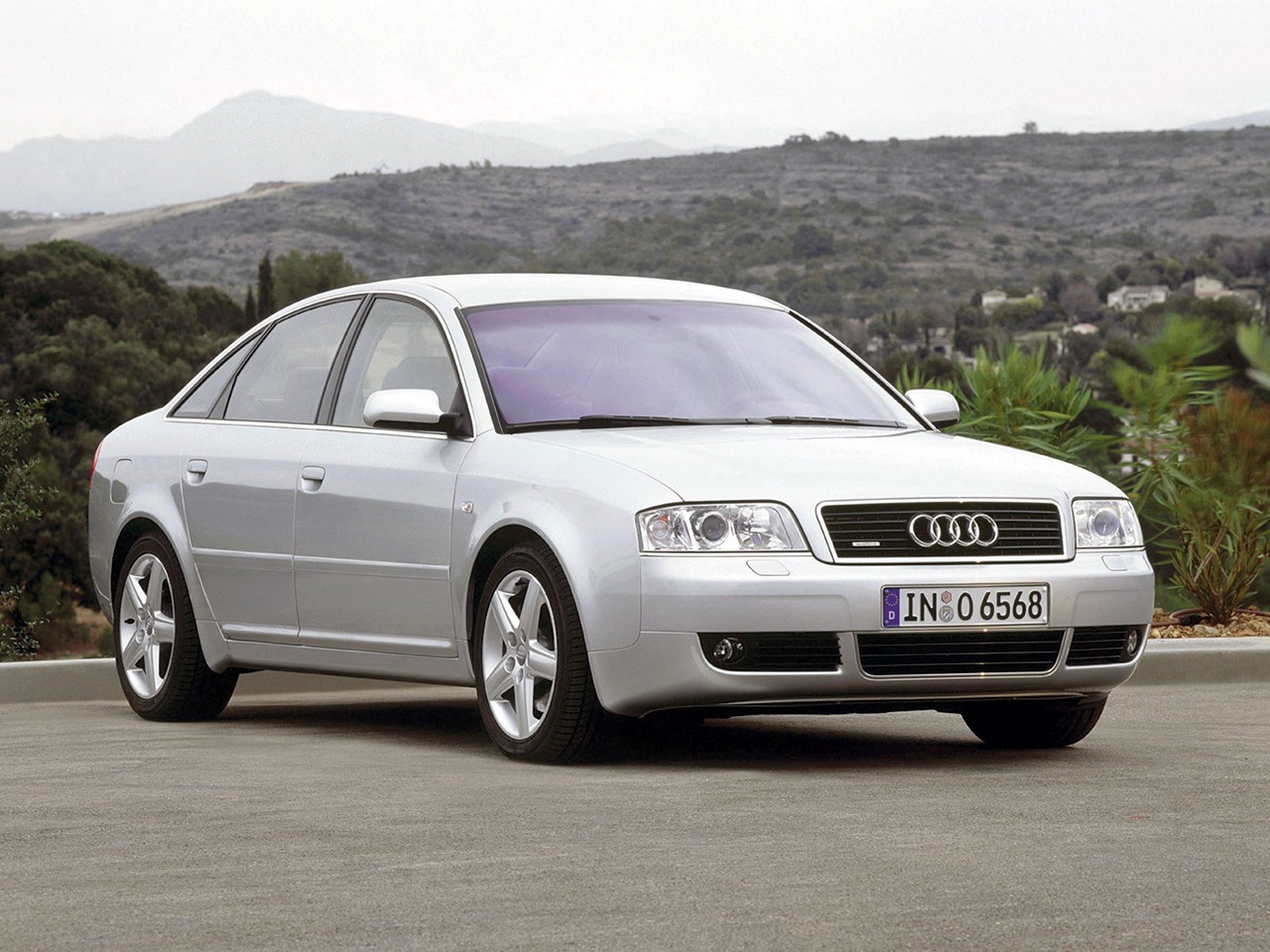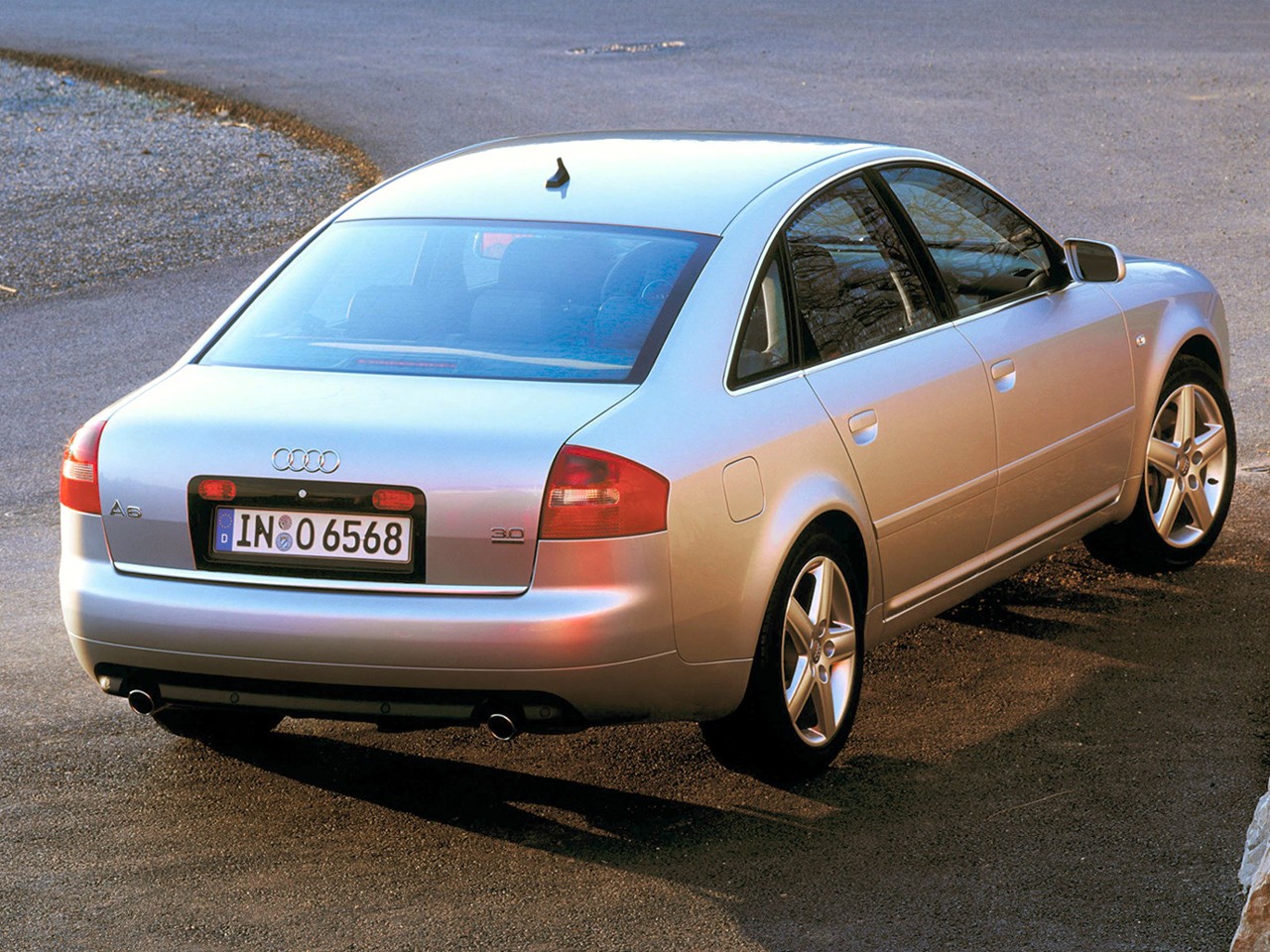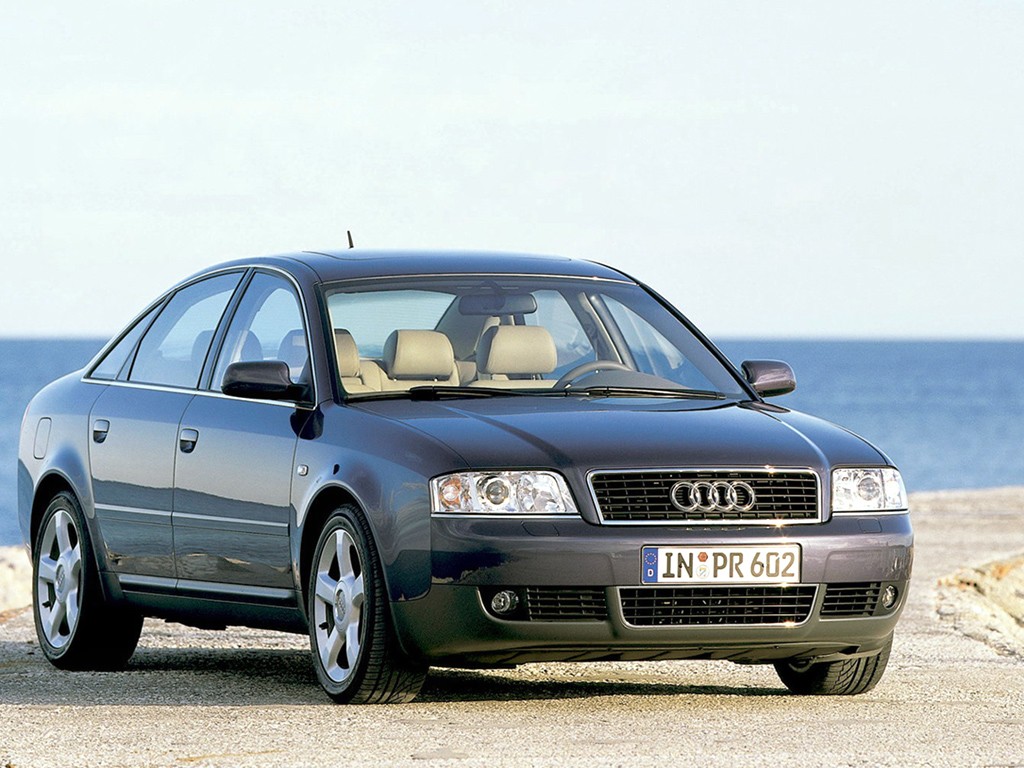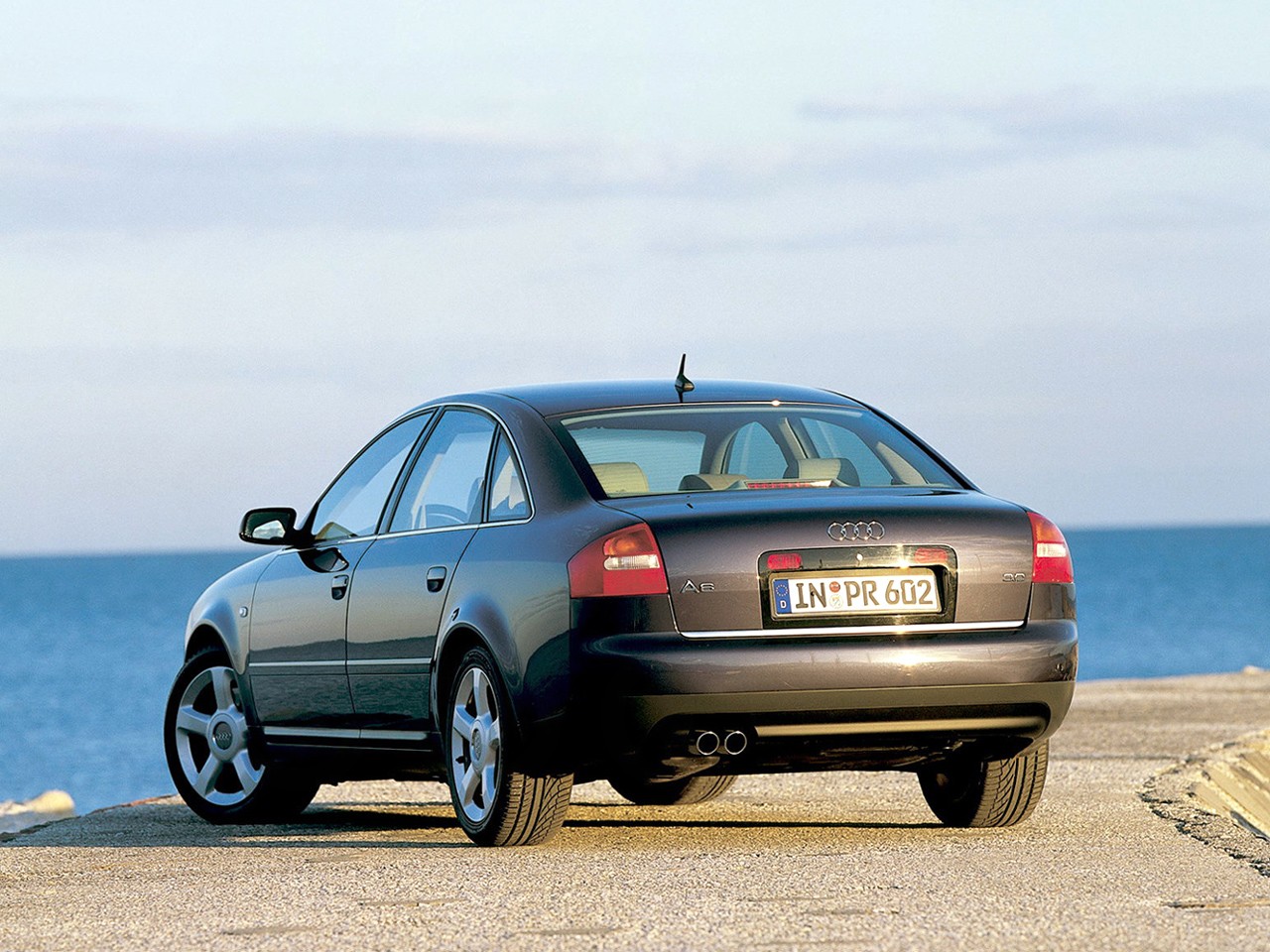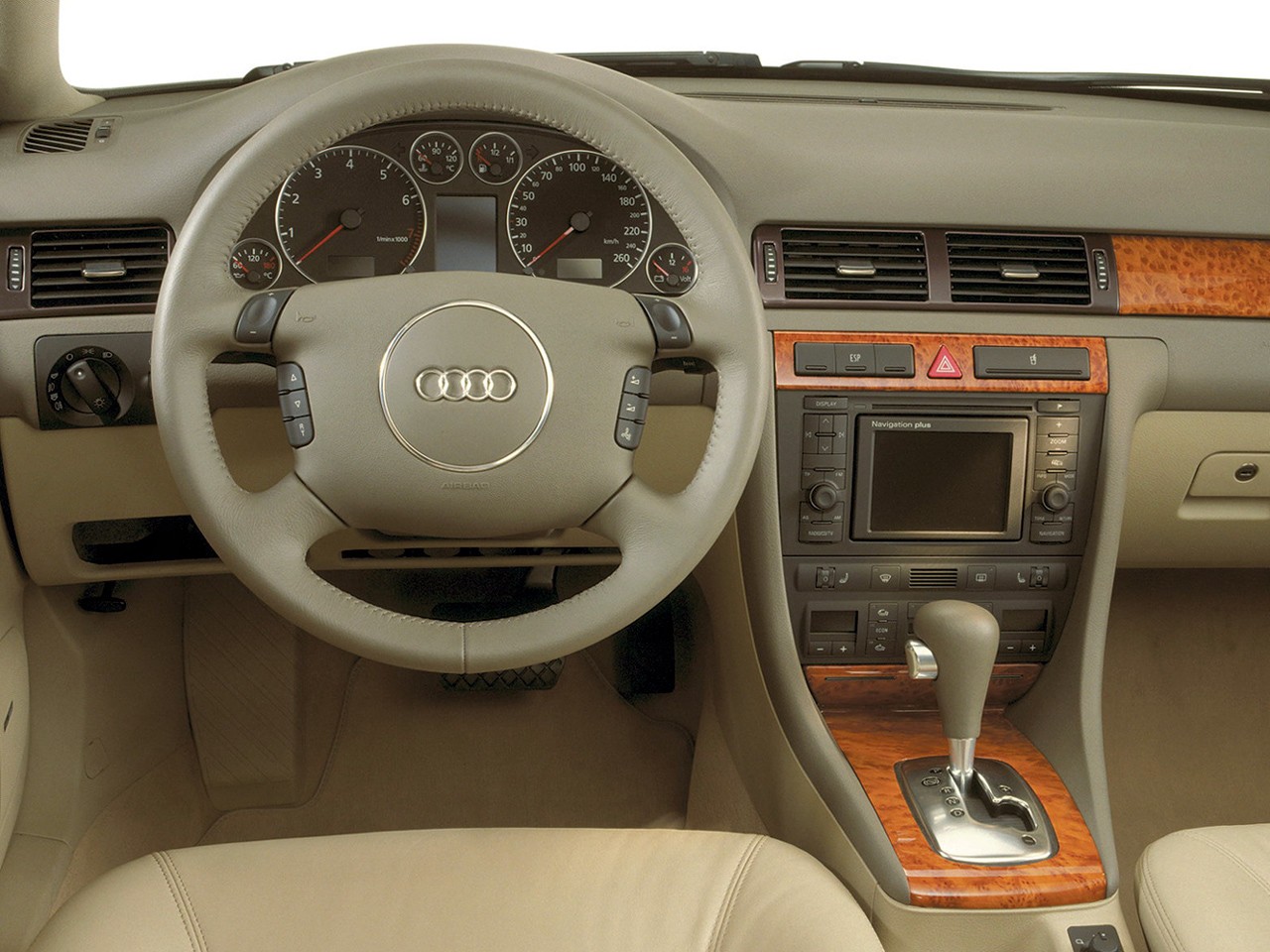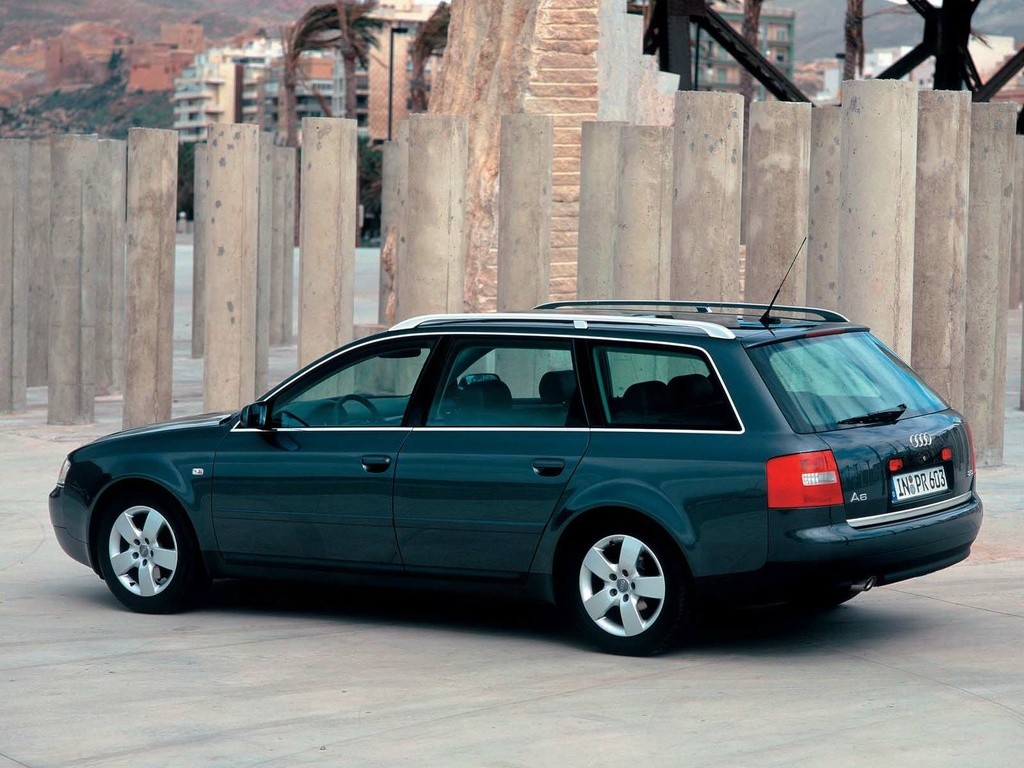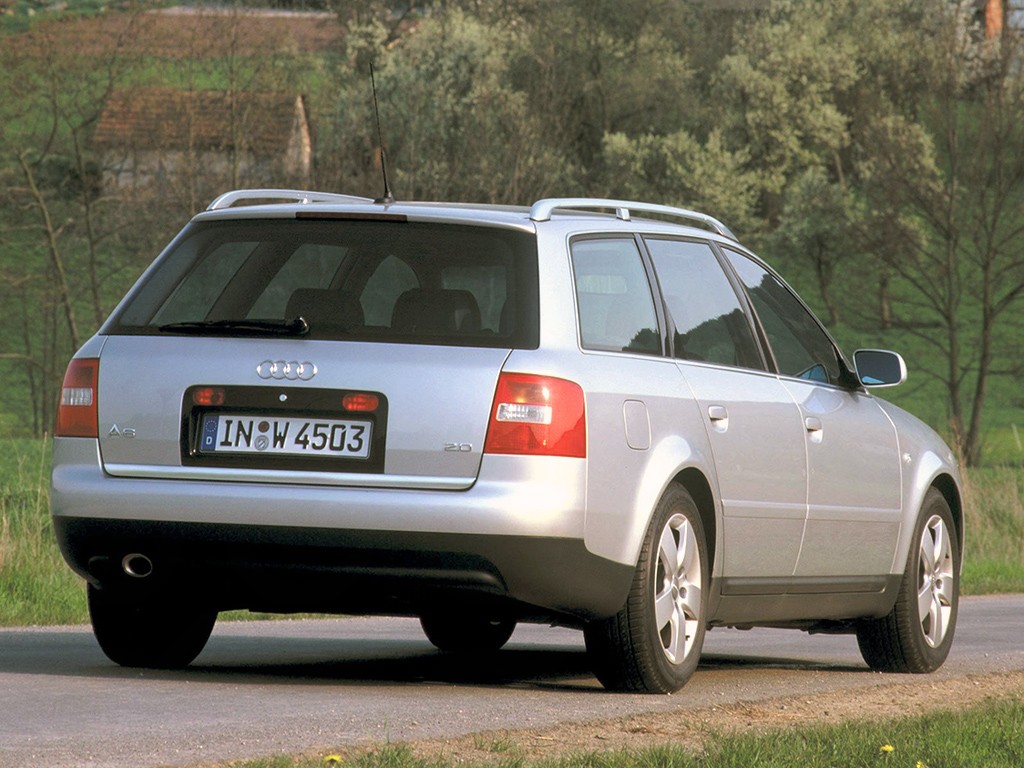
- Spacious and comfortable interior
- Quiet, well-insulated cabin
- Accurate steering
- Extra traction of quattro system provides secure handling
- Firm ride
- Steering lacks feel
- V8 models feel nose-heavy and understeer
- Speedometer markings difficult to read
Review: Audi C5.I A6 and A6 Avant (1997-99)
Overview
The Audi C5 Series I (C5.I) A6 sedan was released in November 1997, with the A6 Avant (wagon) following in October 1998. Manufactured in Neckarsulm, Germany, the A6 and A6 Avant were available with either 2.4- or 2.8-litre petrol V6 engines (the ‘2.4’ and ‘2.8’ variants, respectively), both mated to a five-speed automatic transmission. For the A6, both variants were available with the quattro four-wheel drive system; for the A6 Avant, however, only the 2.8 variant had quattro.
| Variant | Engine | Trans. | Drive | Peak power | Peak torque | |
|---|---|---|---|---|---|---|
| A6 | 2.4 | 2.4-litre AGA petrol V6 | 5sp auto | FWD, quattro |
121 kW at 6000 rpm | 230 Nm at 3200 rpm |
| 2.8 | 2.8-litre AGK petrol V6 | 5sp auto | FWD, quattro |
142 kW at 6000 rpm | 280 Nm at 3200 rpm | |
| A6 Avant | 2.4 | 2.4-litre AGA petrol V6 | 5sp auto | FWD | 121 kW at 6000 rpm | 230 Nm at 3200 rpm |
| 2.8 | 2.8-litre AGK petrol V6 | 5sp auto | quattro | 142 kW at 6000 rpm | 280 Nm at 3200 rpm |
Dimensions and suspension
Compared to the Audi C4 A6 , the C5 A6 sedan was 1 mm shorter (at 4796 mm), 27 mm wider (1810 mm), 33 mm taller (1453 mm) and had a 73 mm longer wheelbase (2760 mm). Compared to the sedans, Avants had a 26 mm higher roofline at 1479 mm.
The Audi C5 A6 had independent, four-link front suspension and, for front wheel drive models, torsion beam rear suspension. The Quattro models, however, had double wishbone rear suspension.
quattro
The quattro system for the Audi C5 A6 included a Torsen Type 1 centre differential which provided a default 50:50 front:rear torque split. If traction was lost, however, up to 75 per cent of the engine’s torque could be directed to either axle. The quattro models were also fitted with rear electronic differential locks – in addition to the front electronic differential locks for front-wheel drive models – which could brake spinning wheels and effectively transfer torque to the opposing wheel (i.e. cross-axle torque transfer). For quattro models, the electronic differential locks operated at speeds of up to 80 km/h, but only up to 40 km/h for the front-wheel drive models.
The quattro models were also fitted with a more sophisticated multi-link rear suspension configuration rather than the torsion beams employed for the front-wheel drive models.
Safety equipment
Standard safety equipment for the Audi C5.I A6 included dual front airbags, front side airbags, ABS, electronic brake force distribution and front seatbelt pretensioners. The 2.8 quattro was further equipped with electronic stability control and traction control.
Euro NCAP crash testing
In Euro NCAP crash testing , a 1998 Audi C5 A6 2.4 received a three star adult occupant protection rating with a score of 23. In the offset impact test, the driver’s chest experienced relatively high loadings indicating marginal protection; the lower fascia also contained hard structures which could damage the knees and increased the risk of injury to the upper legs and pelvis. In the side impact test, chest protection was also assessed as marginal.
Features: Audi A6 2.4 and 2.8
Standard features for the Audi A4 2.4 included 15-inch alloy wheels, an eight speaker sound system with a six-disc CD player, climate control air conditioning, leather trim, front fog lights, a leather-wrapped steering wheel, remote central locking, power windows and mirrors, tilt and telescopic steering wheel adjustment, trip computer and an immobiliser. The A6 Avant was also equipped with rear parking sensors.
The A6 2.8 variants were further equipped with 16-inch alloy wheels, power adjustable front seats and split and folding rear seats, while the quattro models were also fitted sports suspension settings and an alarm system.
Review: Audi C5.II A6 and A6 Avant (1999-01)
Overview
Released in October 1999, the Audi C5 Series II (C5.II) A6 and A6 Avant introduced improved safety equipment and re-tuned suspension for Australian conditions. The range was also revised – the 2.4 quattro models were discontinued, while the A6 2.8 was solely available with the quattro system. In April 2000, the A6 4.2 quattro was released.
| Variant | Engine | Trans. | Drive | Peak power | Peak torque | |
|---|---|---|---|---|---|---|
| A6 | 2.4 | 2.4-litre AGA petrol V6 | 5sp auto | FWD | 121 kW at 6000 rpm | 230 Nm at 3200 rpm |
| 2.8 | 2.8-litre ACK petrol V6 | 5sp auto | quattro | 142 kW at 6000 rpm | 280 Nm at 3200 rpm | |
| 4.2 | 4.2-litre ARS petrol V8 (40v) | 5sp auto | quattro | 220 kW at 6200 rpm | 400 Nm at 3000-4000 rpm | |
| A6 Avant | 2.4 | 2.4-litre AGA petrol V6 | 5sp auto | FWD | 121 kW at 6000 rpm | 230 Nm at 3200 rpm |
| 2.8 | 2.8-litre ACK petrol V6 | 5sp auto | quattro | 142 kW at 6000 rpm | 280 Nm at 3200 rpm |
Safety equipment
Compared to their C5.I predecessors, standard safety equipment for the C5.II A6 and A6 Avant was extended with the introduction of rear side airbags and full-length curtain airbags (i.e. for front and rear occupants). The 4.2 was further equipped with electronic stability control and traction control.
Features
Standard features were also extended: the 2.4 variants were fitted with power adjustable front seats and split and folding rear seats. The 2.8 quattro models were further equipped with a Tiptronic sports steering wheel.
Compared to the 2.8, the 4.2 added 17-inch alloy wheels, an eight speaker Bose stereo, xenon headlights, rear parking sensors, power sunroof and driver’s seat memory settings. Visually, the 4.2 could be identified by its wider stance, flared wheel arches and double radiator grille.
Review: Audi C5.III A6 (2002-04)
Overview
Released in January 2002, the Audi C5 Series III (C5.III) A6 range introduced a subtle facelift, revised line-up, new engines and improved safety equipment; the A6 Avant, however, was discontinued. The 2.8 was effectively replaced by the 3.0, while a new 2.7TT variant was introduced; the C5.III A6 also introduced a continuously variable transmission (CVT, Audi’s ‘Multitronic’), while the 2.4’s engine was improved. The front suspension was also upgraded with a forged aluminium pivot bearing and lightweight steel wheel hub.
Visually, the Audi C5.III A6 could be identified by its double radiator grille, clear lens headlights, revised tail-lights, larger passenger-side door mirror and visible exhaust pipes. Inside, there were new steering wheel and updated trim and instrumentation. Greater refinement was also achieved through improved door seals, thicker side windows and new wipers.
| Variant | Engine | Trans. | Drive | Peak power | Peak torque | |
|---|---|---|---|---|---|---|
| A6 | 2.4 | 2.4-litre BDC petrol V6 | CVT | FWD | 125 kW at 6000 rpm | 230 Nm at 3200 rpm |
| 3.0 | 3.0-litre ASN/BBJ petrol V6 | CVT | FWD | 160 kW at 6000 rpm | 290 Nm at 3200 rpm | |
| 5sp auto | quattro | |||||
| 2.7TT | 2.7-litre ARE twin-turbo V6 | 5sp auto | quattro | 184 kW at 5800 rpm | 350 Nm at 1800 rpm | |
| 4.2 | 4.2-litre ARS petrol V8 (40v) | 5sp auto | quattro | 220 kW at 6200 rpm | 400 Nm at 3000-4000 rpm |
Safety equipment
Compared to their C5.II predecessors, standard safety equipment for the Audi C5.III A6 and A6 Avant was extended to include brake assist, electronic stability control and traction control. Audi also claimed to have achieved increases in body rigidity.
Features
Standard features for the Audi C5.III A6 were extended to include 16-inch alloy wheels, a nine speaker ‘Symphony’ stereo with improved reception and a six-stack CD player, rear fog lamps and a power sunroof.
The Audi A6 quattro models were further equipped with rear parking sensors, a power adjustable steering column and driver memory settings (seat, mirrors and steering column positions), while the automatic transmissions had a sporting shift program. Beyond this, the 2.7TT and 4.2 added 17-inch alloy wheels, a satellite navigation system with a five-inch monitor and xenon headlights.
Related links
